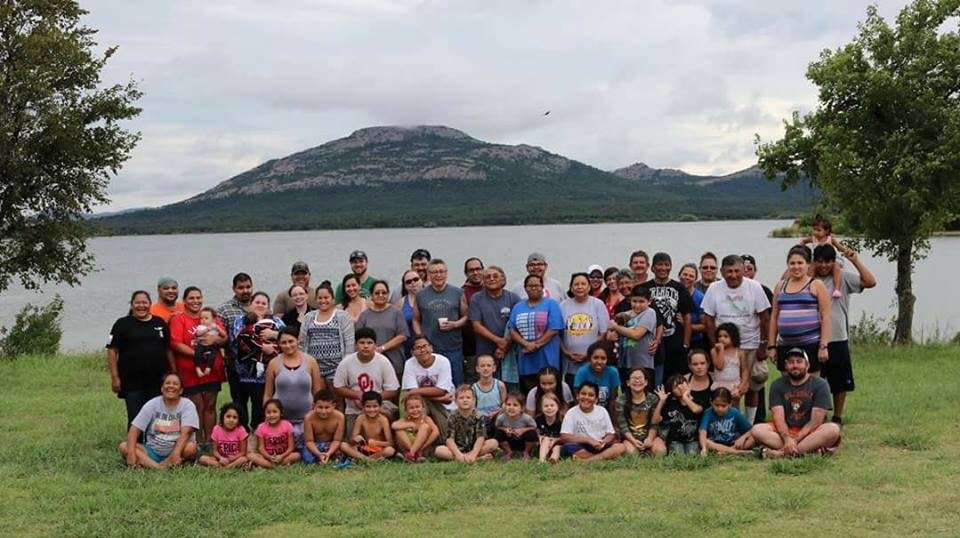
Why I Vanished from Social Media
I wish I could say there was only one reason. But there was definitely a primary reason. The last two months have been a little rough for my family. My little sister had a major stroke. For those of you who've had a loved one go through this you'll understand perfectly what I mean. It's sudden, unexpected, and unfortunately my sister didn't make it to the hospital in time to get the medication that would have saved her from the more severe damage. So there we were: a family in turmoil having to make major decisions regarding my sister's life.
Truly, social media had become habitual chaos. Posting, commenting, liking, sharing across four--sometimes five--platforms can be a lot. When real life happens, suddenly it can appear to be a little absurd. With the challenges of new circumstances, clicking on a social media icon was too difficult. My little sister's life was forever altered, and there was a window when we weren't sure if she would survive. So eventually, I went onto all my social media sites and just deleted them. One after the other and in a matter of a seconds they were all gone. And there was something empowering about that moment. I knew what mattered most and I was going to give it my full attention.
There was a part of me that felt a little guilty. I had released my debut novel in late July and had been plugging away on social media to promote the book. I met many great folks. Sometimes I wished I had that back again. The playful comments and genuine connections. There are a ton of kind and generous people out there. Right now my days are filled with juggling my kids' needs, helping with my little sister, and continuing to serve in Indian Child Welfare. We just finished Cherokee Nation's Angel Project where we gave Christmas gifts to 2,800 Cherokee children in need. We made Christmas a little brighter for some of our most impoverished citizens. I also got to spend quality time with my daughters, and worked with my little sister to help her speak again. It's been busy and trying in profound ways.
I'm grateful, and I've been good about being grateful, but maybe I'm a little more grateful these days. Maybe sometime in the future I'll start my social media back up again. If a new normal ever sets in. For the time being, I'll be posting here on my blog. It's much more straight forward and easy to engage with. Right now I need to keep my life simple to get through.
"Stunning" Novel Cover: Symbolic Representations in Post-Modern Art Forms
There are two questions I love most when it comes to talking about my debut novel. One has to do with the structure, with it's polyvocality laid atop time jumps spanning three decades, and the other has to do with the cover. It's a striking image. An image that conveys perfectly the post-modern fracture experienced by the main character, Ever Geimausaddle, and his resilient trek through the process of decolonization.
There are so many layers to this cover, but before I jump into the nitty gritty I'd like to take a moment to talk about the initial reaction to the image. Covers are designed to do one thing more than anything else: Grab the reader. It's supposed to get a reader's attention so that they'll want to further examine the contents. My hat goes off to Christopher Moisan, who is the Creative Director at Algonquin Books. He did an amazing job creating such a wonderful design. I'll discuss here in a moment about how each layer of the image speaks so clearly to the novel. I wanted to acknowledge first how striking the image is and how perfectly it grabs the eye.
Christopher suggested using the artist who created the image, Christin Apodaca. She had been on his radar for a while and he thought her post-modern style matched perfectly with the post-modern aspects of my brand of literary fiction. She is from El Paso, Texas and representative of Latinx communities. I'm half Mexican, with my father being from Aldama, Chihuahua, Mexico, so it was important to work with Hispanic artists from communities of color. And I can't say enough how important it is to support women artists in a field dominated by men. Christin's murals can be found at different locations in the city of El Paso, TX. You can also discover her art here: http://www.capodaca.com/.
Christopher took the power of Christin's image and enhanced it with deeper symbols. The image itself is ripe with symbolic representation. In black and white alone, the dollar bill and sash sends my mind toward Kiowa and Comanche gourd dances. Those of us who engage in traditional gourd dances know that a crumpled dollar bill dropped at the feet of a dancer signifies a process of honoring. I immediately connected how the main character, Ever Geimausaddle, is trying to live with honor. With the sash coming down, I knew this honor was inextricably tied to his family and his community. Christin did a superb job of picking up on those very important symbols in the novel. I can't even imagine the arduous task of reading someone's novel and then coming up with a visual representation of the novel's theme. Christin did exactly that, and she did so with the exquisite detail of her personal style, which I describe as a post-modern Salvador Dali style. And it matched perfectly with the post-modern structure of the novel.
Then we get the brilliance of Christopher Moisan at work. So how does a Creative Director go from this amazing sketch to a final product that will grab a reader's attention? I asked for the image to be made into color and Christopher was on the same page. I let him know to make the sash half red and half navy blue. These are the colors that Kiowa and Comanche dancers wear. I asked for him to place the red on top to signify that the main character, Ever Geimausaddle, is Kiowa. If it were navy blue on top then it would signify Comanche. While Christopher couldn't make the blue a navy blue because it would've printed too dark on paper and wouldn't have looked blue at all. Moreover, it would've erased all of Christin's beautiful line work. So Christopher went with a royal blue with dark line work. I understood his reasoning. It's not only how the colors come out in a jpeg, but also how it prints on paper. Once he filled the image with color not only did the sash pop but the dollar bill as well.
Now the image was an accurate depiction of what I grew up seeing at the gourd dances. I'm a gourd dancer myself. My family (Hokeah/Tashequah) has organized gourd dances for decades on the Southern Plains of Oklahoma. We're tied into some of the oldest Kiowa and Comanche Societies, such as the Kiowa Tia-Piah, Comanche War Scouts, and Comanche Little Ponies.
So I'll be honest here. I gave Christopher a hard time, or maybe I was just a little picky. I hope I wasn't too much of a pain. I wanted to get the colors right. When the ARCs printed, the image came out a little too artificial, I thought. I asked Christopher if the final book was going to do the same. He assured us that he had immediately contacted the printer and discussed the issue. I felt like a bit of a diva. I didn't want any part of the image to come off as artificial, and Christopher was a saint. I'm extremely grateful to have this opportunity to showcase my writing. I feel very fortunate to be in this position. I hope I wasn't too much of a nag. I felt like I kept asking for tweaks here and there. Subtle requests that may have been too often. But I'm grateful Christopher was willing to hear me out and modify at each stage.
What truly made the image resonate for me was the overall design. Christopher came back with a couple background settings. When I saw that pattern atop the orange, I immediately thought of the main character's grandmother, Lena Stopp. Just to explain the brilliant mind of an amazing Creative Director, let me tell you how deep this image goes. Notice the grid. The subtle squares in the background behind Christin's image. The bold orange background beneath red squared patterns, with those splashes of yellow. It's one of Lena's quilts! Now you're about to say I'm giving away a spoiler. You're asking, "Lena makes quilts in the novel?" She does, but this is divulged in the first chapter. You can read the first chapter via Buzz Books through Publishers Marketplace. So I'm not giving away any spoilers that aren't found in the first chapter.
What makes this so special is how Christopher turned the cover into a representation of a bird. Why is that important? As you read the first chapter, you learn that Lena Stopp makes grandchild quilts. On those quilts, she places images of birds. She does so because her family belongs to the Bird Clan in the Cherokee tribe. She uses the quilts as a way to keep her family connected to each other. I got the idea from my own mother, Virgilene Hokeah. My mother makes grandchild quilts for all her grandchildren. They all have the exact same pattern, but each quilt is made of a different color scheme. It captures her grandchildren's uniqueness and their ties to her, simultaneously. Similarly, Lena Stopp uses bird symbols to represent the Bird Clan so her grandchildren will know they are connected to the Cherokee community.
Understanding how to work with artists is an amazing talent. Christopher was able to take Christin's sketch and read my novel and come up with a way to capture the heart of the main character, Ever Geimausaddle. There's an important detail with Lena's quilts that I'll not be able to mention here. It comes in the final chapter of the novel. I'll have to let you discover that element yourself. But I would like to say is how much thought and care went into this cover. While it certainly does its job of grabbing someone's attention, it also speaks to a team of brilliant minds who think beyond simple surface qualities, who can see concepts behind imagery, and has the capacity to dream big and reach deep into the emotional center of a story.
Intro to Literary Fiction: A Native American Writer's Reasoning Toward Episodic Novel Writing & Unfamiliar Terms in Familiar Terrain
"What do you write?" Have you heard that question before? For literary writers this question is like a grain of dirt on the ass cheek of a wild hog running through the brush in the Ozark Hills. Every time I go to answer the question I know what's going to follow. It's going to be another question, with a quizzical expression on the questioner's face, asking me, "What's literary fiction?"

I wish I could say, "Literary Fiction," and folks would go, "Okay, that's cool," and then we could both go our separate ways. But that's never happened, and likely never will. In recent years, I've heard the term "adult fiction" being used more often. Maybe it's because we get less confusion and less hassle so we've started to lean on it. It's kinda like when I call to-go from a restaurant and the person on the other end of the phone doesn't hear my name right. I'll say, "Oscar" and they'll say back, "Austin?" I'll do this three times and then give up, saying, "Yes, Austin." At some point, literary writers get tired of trying to explain ourselves.
I've also started to name writers and for the most part I'll say Louise Erdrich, but I've also said Toni Morrison's name, to give folks a reference point--in search of someone they may have heard of. Typically, I name writers who have won the Pulitzer Prize or the Nobel. But the average person on the street doesn't follow those lists so often I'm left without a quick reference.
I've searched on the internet. There's "serious fiction," but I think that's more confusing than literary fiction. Adult fiction makes sense. It's a little more to the point, but most genres could be considered adult fiction. While literary fiction fills the shelves in bookstores for some reason there is little to no clarity on the genre. How can such a popular form of fiction have such a vague understanding?
"However, we should not be judged by our lowest common denominators. And also you should not fall prey to the fallacious thinking that literary fiction is literary and all other genres are genre. Literary fiction is a genre, and I will fight to the death anyone who denies this very self-evident truth." --Patrick Rothfuss
Then there's the response I get from writers of other genres. Some folks think literary fiction writers are stuck up and look down on genre, which couldn't be further from the truth. I love genre fiction and read across several genres like horror, fantasy, and noir. I think literary writers tend to be more serious in our personalities and that might come off as being disinterested. I can only speak for myself so I'll say that I am a serious person and I tend to be drawn to more serious issues. There's a part of me that feels obligated to attempt to fix societal issues, like I need to do my part to make life better for people of color. But in no way do I think genre fiction is less than literary fiction. If not for genre fiction I wouldn't have fallen in love with writing in the first place.
So I've come up with a description of literary fiction. Just to appease myself and my frustration in the pursuit of an explanation. Here it is: "An introspective study of the human condition that explores sociopolitical issues. More serious than genre fiction, it purposefully blurs the lines between hero and villain to focus on character driven plot. In addition, it seeks to disrupt formulaic writing."
It's long. I can't say this to someone on the street. But it knocks the dirt off the wild hog's ass, so I'm gonna keep it. I think people need to understand what they're getting into before they start reading a novel. My debut, CALLING FOR A BLANKET DANCE, is about Native communities, culture, and identity, but it's also about how Indigenous families confront toxic behavior. It's about the conflict between Indigenous matriarchy and Western patriarchy. What happens when these two ideologies clash? The main character, Ever Geimausaddle, becomes a battle ground. He's caught between two contending forces and he must make a choice. And if he does transform, what will it look like? The only way I could do this story justice was to wrap it in the genre I hold dear: Literary Fiction.

Native Voices for Native Audiobook: Recording Chapters in CALLING FOR A BLANKET DANCE
I can't tell you how grateful I am to be able to read for my debut novel. Many writers don't get the opportunity to record for their own audiobooks. Because my novel is polyvocal and comes from the heart of tribally specific communities, Kiowa and Cherokee, I was more than happy when Algonquin Books asked me to read for the male characters in my debut. Moreover, they hired a Native actress to read for the women characters: Rainy Fields.
You might know Rainy Fields from her work with Terese Marie Mailhot's debut, HEART BERRIES. Rainy is an enrolled tribal member, Muscogee Creek/Cherokee, and born in Claremore, Oklahoma. I was elated when she signed on to read for the audiobook. She is an experienced Native actress and well-versed in recording audiobooks.
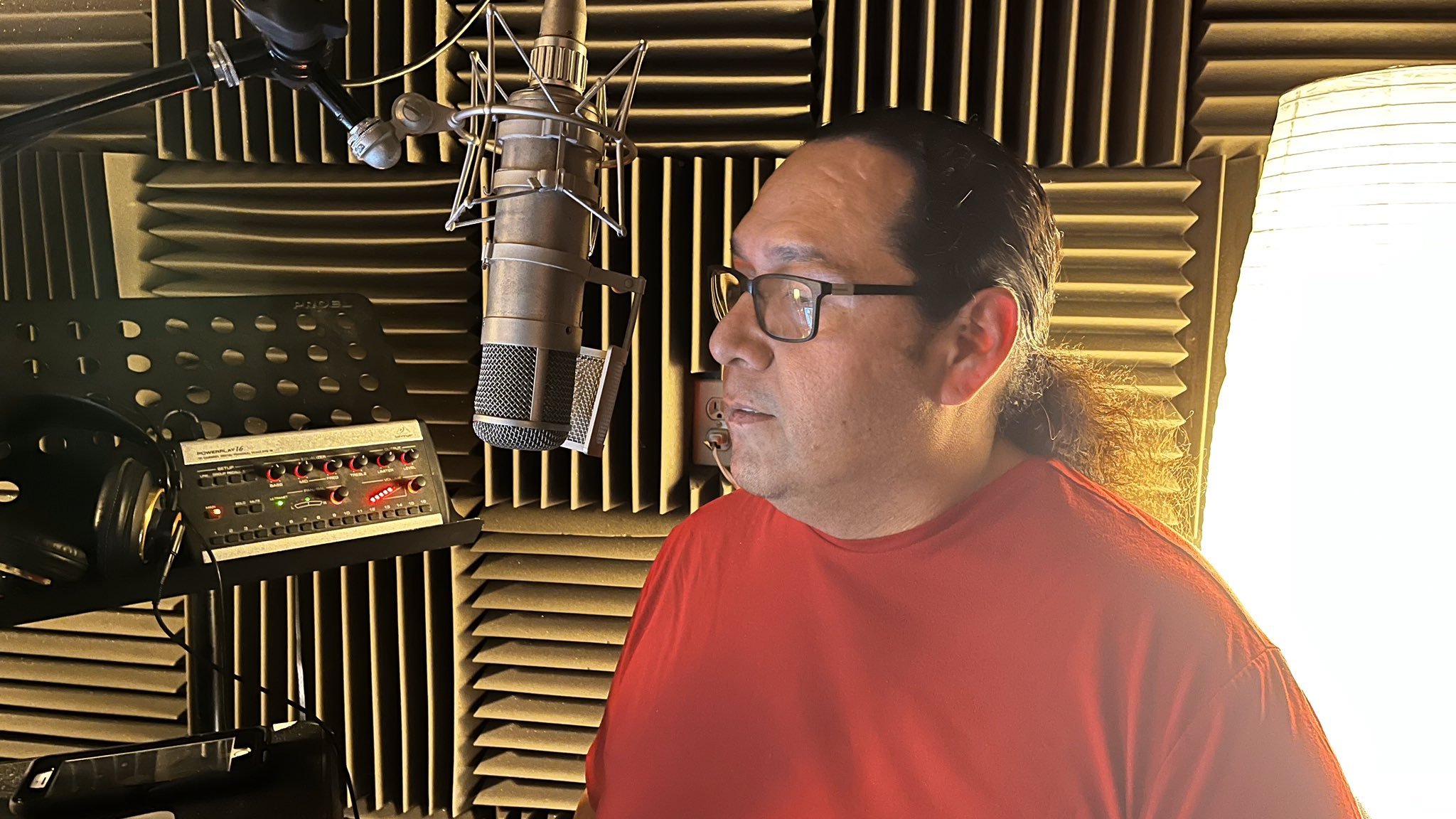
I on the other hand was not so well versed. This was my first time recording anything--much less half a novel. It was fun though. I learned a lot about the world of voice recording. Honestly, I hope I get the chance to do this again. I feel like I caught on quickly. I needed direction at the beginning and the more I recorded the more I caught onto moments when I'd miss a word or add one in.
I was especially interested in capturing the Kiowa and Cherokee inflections in the voices. I've said this before on previous blog posts. While both Kiowa and Cherokee people have Oklahoman accents, there are subtle differences between the two. Kiowa people can almost transform English into a Kiowa-sounding language, whereas Cherokees have a stronger twang to our inflections--a little more singsongy. It was fun being able to move between those subtle dynamics in the two tribal communities I hold so dear.

I have to give a big wado to Blue House Media for coordinating with Hachette Audio/Algonquin Books for these recording sessions. Joel was great, kind, and generous. He quickly took care of any issues and was pleasant company. He made the experience fun and exciting. And of course where would I be without Cameron Potts of John Marshall Media, who directed the entire recording and was an amazing coach, and Laura Essex from Hachette Audio, who oversaw the entire production and gave amazing feedback. I'm feeling very lucky to be a part of such a wonderful and supportive team.
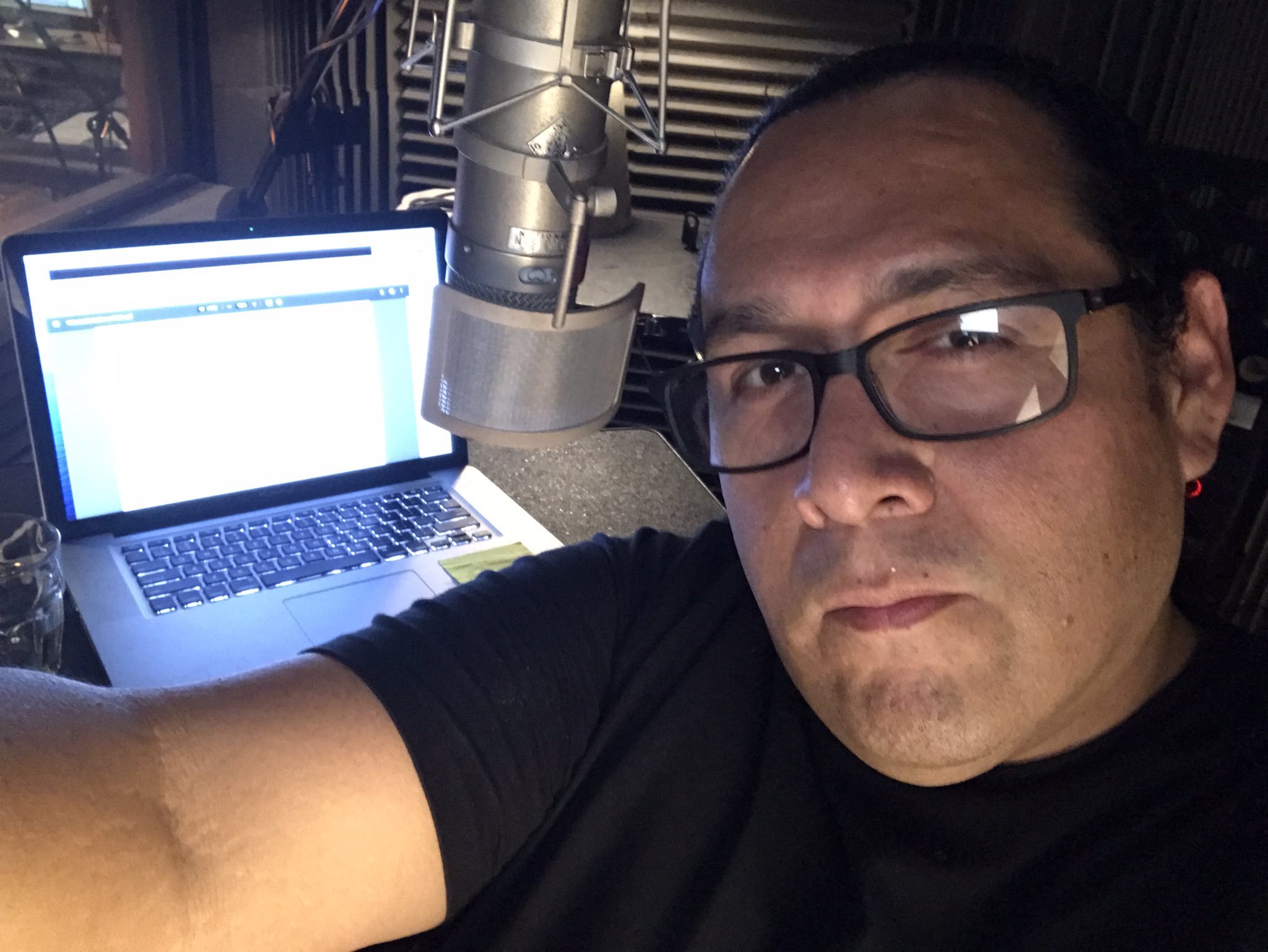
As a Native writer, I was excited to be able to have Native people doing the voices for my audiobook. I'm very grateful Algonquin Books was considerate of this very important cultural dynamic. I'm excited how there are different aspects to the production of the debut novel of which have connected to the three intersecting cultures in my life, Kiowa, Cherokee, and Mexican. While there's always going to be detractors and naysayers (those cliched crabs-in-a-barrel), I'm proud to have been able to connect with artists from both Native and Mexican communities.
The Revival of Juxtaposition & the Reveal of Thematics
When we pick up any literary novel we must commit to being an active reader. We can be entertained by the surface plot and the triangulation between characters, certainly. But the purpose of literary fiction is to dive deeper into the text and search for symbols. Not only the symbols that comprise a larger thematic in a storyline, but, more importantly, the symbols that shape the really real world we walk through every day.
We can all make a case for engaging in a storyline passively. Sometimes we need to veg out on our favorite television show after a long day of hard work. Or we can reread one of our favorite books from one of our favorite authors. We know what's coming. It's not going to surprise us, and in fact we're looking for those predictable forms of entertainment as a way to escape our every day grind.
Then there comes those who are students of the game. Sometimes life gets a little too predictable and we need nourishment and intellectual stimulation. This is where literary fiction shines. Writers like Louise Erdrich, Toni Morrison, Alice Munro, and the like can entice us with intriguing worlds through beautiful sentences. And the deeper we look at their work, searching for the images and characters that represent something greater, we can discover insights into the human condition that make us into better people. Our empathy skills increase and we can better navigate social situations, with the hopes of creating a more just world.
When I think back on some of my favorite literary novels, I'm always remembering characters weighed against other characters, like in Louise Erdrich's novel The Roundhouse, where the treatment of Geraldine Coutts becomes even more profound as we learn more about Sonja. Equally, how Gabriel Garcia Marquez's novel One Hundred Years of Solitude exposes a new layer to humanity with each generation of the Buendia family. So when we exercise the power of juxtaposition, the multiple layers expose a greater truth. And often this truth gives us a hard look in the mirror, forcing us to self examine our own contributions to societal ills.
Ultimately, the reason I'm discussing juxtaposition today has to do with dynamics in my own writing. I'm brainstorming book 5 right now and searching for more details as the story concept floats around in the back of my mind. Also, much of my fiction, which is literary fiction, is developed through a variety of devices--one being juxtaposition--and I can't help but think of how each character weighs against the others.
"I'm always trying to find 'connections' between things. That art is the juxtaposition of a lot of things that seem unrelated but add up to something recognizable." - Pat Metheny
This dynamic plays out with much intentionality in my debut novel, Calling for a Blanket Dance. The novel is told by 12 different narrators with the purpose of juxtaposing each. Moreover, how each narrator compares and contrasts to the main character, Ever Geimausaddle. In fact, the thematics of the novel can only be discovered by juxtaposition. So much so, in the final critical moment of the novel, the reader must ask themselves: how would each of the previous 11 narrators act in this moment? Would they have done what Ever did in the final scene? I'm keeping these questions ambiguous right now because the novel doesn't release until July 26, 2022. I'll do my best here to not give away any spoilers. But it's the power of juxtaposition that offers the novel its greatest impact.
A longtime effort of mine, which is also showcased in the debut, is to disrupt the perception of Native Americans being a single homogenous group. Each tribe has beautiful differences, and we are drawn together under a shared colonial history. It's the power of juxtaposition that gives me the ability to show this tribal diversity on the page. The main character, like myself, belongs to two different tribes: Kiowa and Cherokee. I'm able to compare and contrast Cherokee communities with Kiowa communities. The first chapter is narrated by Lena Stopp, who is Cherokee, and then the second chapter is narrated by Vincent Geimausaddle, who is Kiowa. Each chapter moves back and forth between Kiowa and Cherokee community members so the reader can see those beautiful differences. Oklahoma has 39 different tribes and those of us who grew up here know these differences well, but if you're not consistently in our circles it can be difficult to distinguish. Juxtaposition gives me the opportunity to show readers a side of the Native American world they may have not yet considered.
“Creativity is that marvelous capacity to grasp mutually distinct realities and draw a spark from their juxtaposition.” ― Max Ernst
I only have time here to touch the surface of how juxtaposition plays out in my debut. As you come to know the characters, you'll see why Sissy narrates Lonnie's story and then how Lonnie and Leander compare and contrast. Moreover, how Ever Geimausaddle compares to his grandfather, Vincent. Does Ever pick up where Vincent left off? What does Ever do differently? How does this choice alter Ever's life? I could go on and on. The debut is so rich with juxtaposition, like Opbee and Lena, Turtle and Lila, Quinton and Ever (Sun Boy Split in Half). And it's only enhanced by the cultural elements throughout the novel. There is so much to discuss that I could go on and on for hours if not pages, and I hope you pick up a copy of Calling for a Blanket Dance so we can talk about these amazing details. I'm looking forward to the rich discussions this novel will generate.
Lately, I've found myself thinking a lot about the power of juxtaposition and how much we need to exercise this muscle as readers. It gives us the opportunity to view another person's hardships with empathy, but it also creates a much richer existence, where our quality of life is enhanced by a simple task: compare and contrast. And when we do so with purpose and intent, we can better see the world through someone else's eyes.
(Images were borrowed from Flickr)
Highly Anticipated Debut Novel in 2022 from Native American Author
So I know it's not cool to say "own voice writer" anymore these days, but we have to give credit to the Native writers writing from inside our own tribal communities. It doesn't happen as often as you might think. And you know what happens even less? When a debut Native writer from inside his tribally specific and historically targeted community gets a little recognition.
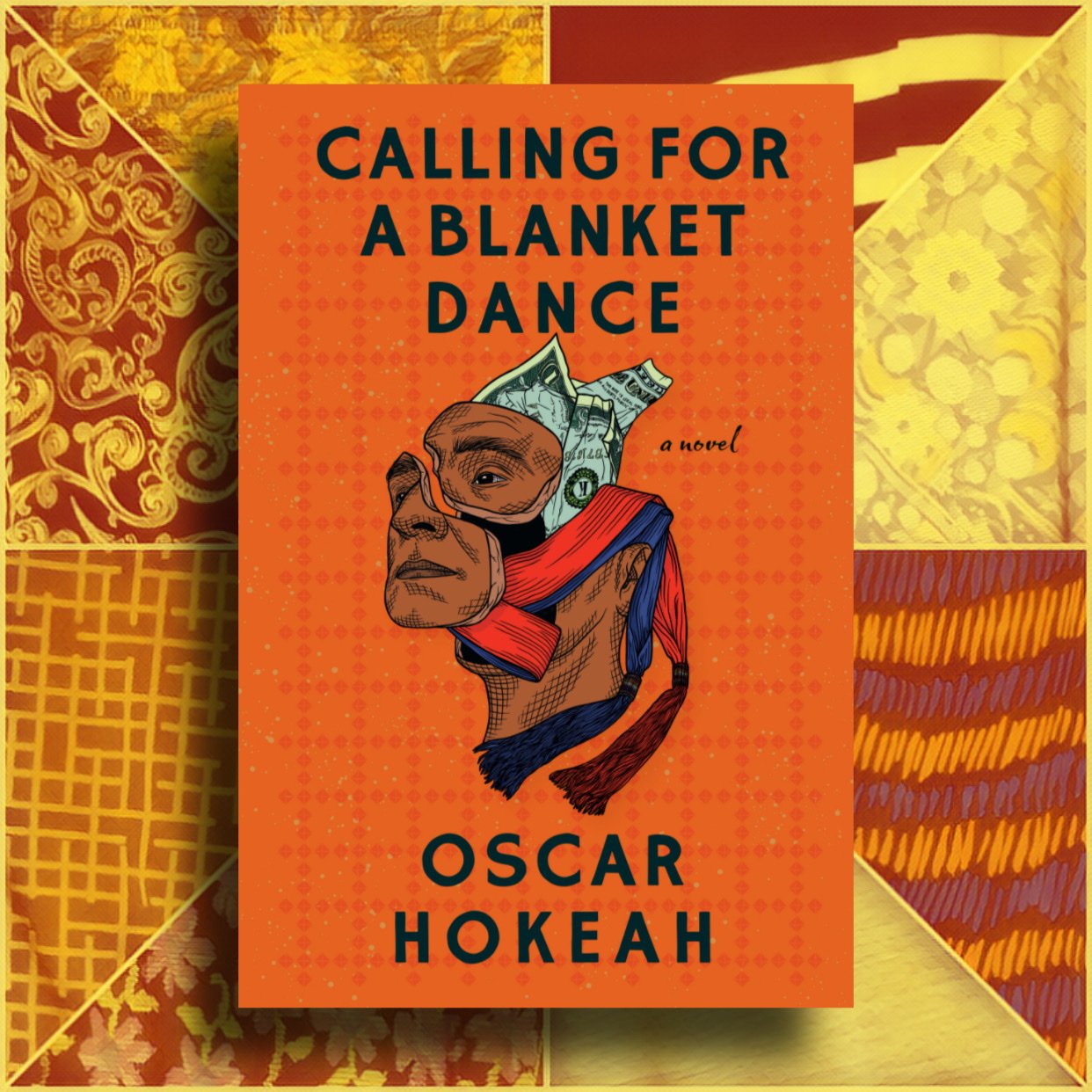
It's not easy writing about yourself. It's awkward. It can come off as egotistical. The shameless self promotion. I apologize, truly, for any of those vibes that may come out of this post. Honestly, it can be rough waters out there for any debut author, and we try to find small ways to get our novels into the hands of would-be fans.
Plus, we work years and years, toiling over words and living deep inside our imaginations to bring readers a vivid, entertaining, and sometimes eyeopening story. My debut novel, CALLING FOR A BLANKET DANCE, has been 14 years in the making. The earliest chapter was written back in 2008, and the debut will hit shelves on July 26, 2022. That's a long journey. We work hard on these projects and are eager to find readers to entertain.
Then we have good news to share and want to tell anyone who's willing to listen. That's part of the reason I'm writing this post. The debut has been honored with "most anticipated" and "highly anticipated" or "key debut" and I'm excited to share the wonderful news. Check out the list below:
- Library Journal (Key Literary Debut 2022)
- Goodreads (Highly Anticipated Debut 2022)
- Buzz Books by Publishers Lunch (Buzz Worthy Book 2022)
- Book Page (Most Anticipated Fiction 2022)
- Bookshop (Most Anticipated Book 2022)
- Bookish by NetGalley (Highly Anticipated Book 2022)
- Changing Hands Bookstore (Most Anticipated Book 2022)
Now if you'll let me share with you a description of the novel:
A moving and deeply engaging debut novel about a young Native American man finding strength in his familial identity, from a stellar new voice in fiction.
Told in a series of voices, Calling for a Blanket Dance takes us into the life of Ever Geimausaddle through the multigenerational perspectives of his family as they face myriad obstacles. His father’s injury at the hands of corrupt police, his mother's struggle to hold on to her job and care for her husband, the constant resettlement of the family, and the legacy of centuries of injustice all intensify Ever’s bottled-up rage. Meanwhile, all of Ever’s relatives have ideas about who he is and who he should be. His Cherokee grandmother urges the family to move across Oklahoma to find security; his grandfather hopes to reunite him with his heritage through traditional gourd dances; his Kiowa cousin reminds him that he’s connected to an ancestral past. And once an adult, Ever must take the strength given to him by his relatives to save not only himself but also the next generation of family.
How will this young man visualize a place for himself when the world hasn’t given him a place to start with? Honest, heartbreaking, and ultimately uplifting, Calling for a Blanket Dance is the story of how Ever Geimausaddle found his way to home.
If my debut sounds like something you'd like to check out, please reach out to your local bookstore and ask them to carry copies of CALLING FOR A BLANKET DANCE. You can also preorder at your favorite online retailer:
- Bookshop
- Barnes & Noble
- Amazon
- Target
- Walmart
- Books-A-Million
- IndieBound
- BulkBookstore
- Indigo (Canada)
To learn more about who I am and where I come from, feel free to peruse my website, read a few blog posts, and check out my social media. I'm most active on Twitter, but I'm trying to find more time on Instagram. I've recently made a TikTok but I'm still learning the ropes (so I apologize if my TikToks are a little crude).
Thank you for hearing out a nothing-little-Native from small-town Oklahoma. I hope you get a chance to read my debut and dive into Ever Geimausaddle's eclectic world. If you have a moment, drop a line in the comments below. I'm always happy to answer any questions and talk shop.
Digesting Fragments as Memories: CALLING FOR A BLANKET DANCE
Let me ask you a simple question: What was a significant event in your life? Moreover, how did it impact you, change you, make you into the person you are? What I like most about this question is how it immediately takes us deep into memory. Suddenly a series of memories flood our minds and we rifle through each to determine which might be the most impactful. Now let me switch it on you. What if I asked each of your relatives about the most significant event in your life?
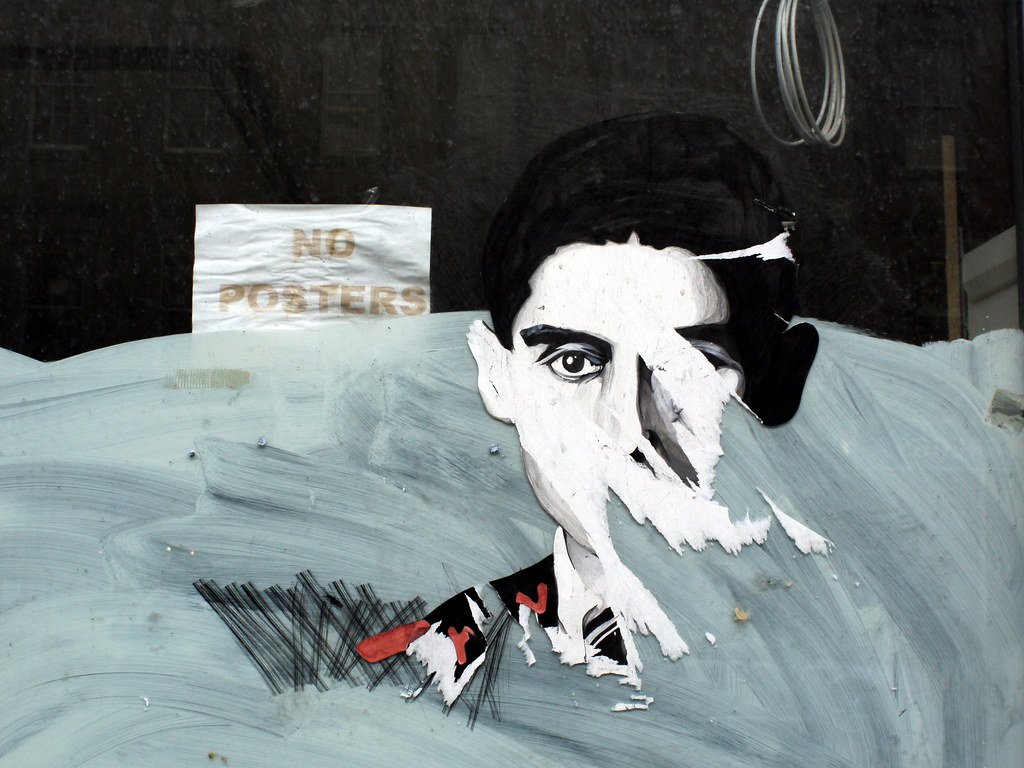
Suddenly, we might have multiple stories. Your grandmother might tell a different story than your grandfather. What about your parents? Your spouse? Your siblings? Your cousins, aunts, uncles? Now we have an entire chorus, a symphony if you will. And in this symphony the music is an ensemble of memory.
“It's enough for me to be sure that you and I exist at this moment.” ― Gabriel García Márquez
One could argue we primarily exist by memory. The memories others have of us. The memories we carry about ourselves. Each moment we share in real time can only be processed in memory. Does this mean there is no here and now? Is memory the only form of existence?
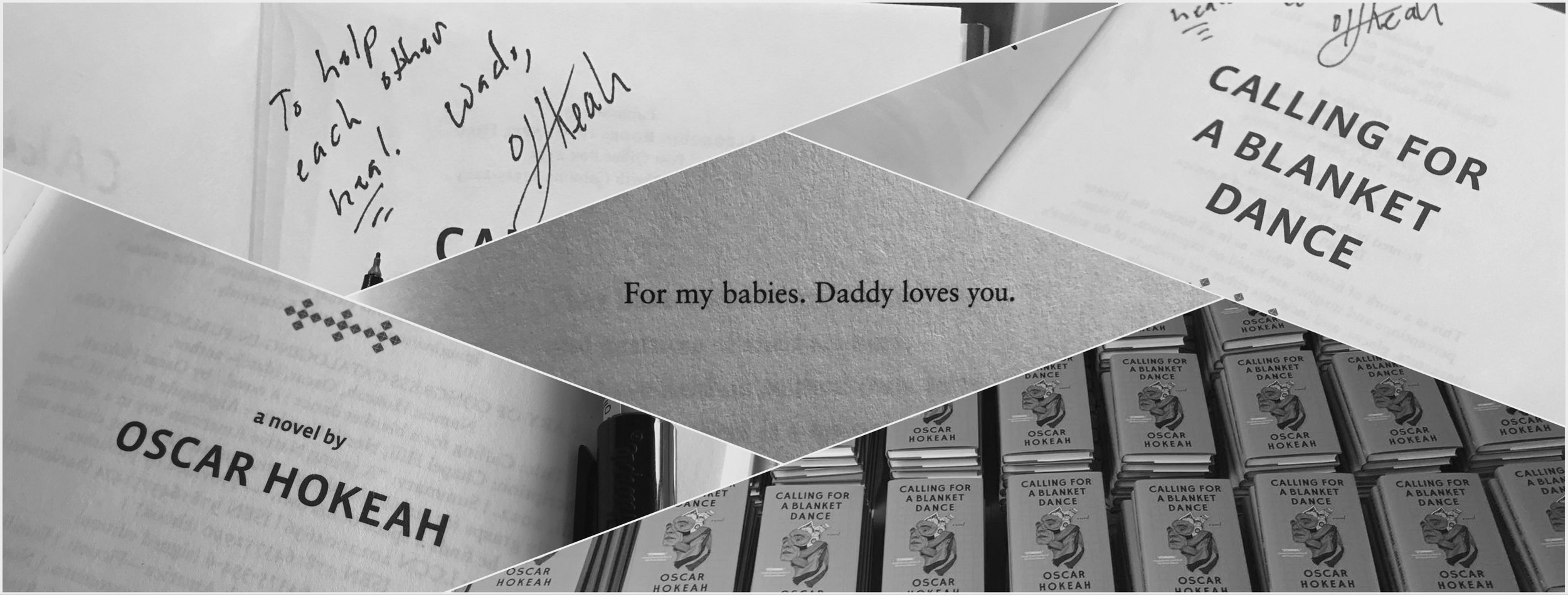
Before I carry on too much longer with all these questions let me say here that my debut novel, CALLING FOR A BLANKET DANCE, allows readers to consider these very questions. The structure of the novel is told by 12 narrators. The main character is Ever Geimausaddle. Each chapter is told by a different family member. We start with his grandmother, Lena, and then move onto his grandfather, Vincent, followed by his uncle, Hayes, and so on and so forth, going through aunties, uncles, cousins, and his sister. Then in the final chapter we hear from Ever himself.
Where the aspect of memory comes into play is the time span between each chapter. Lena tells us a story about when Ever was an infant, while Vincent tells us a story about when his grandson was five years old. Then his uncle follows with one from when Ever was 10 years old. The chapters hop three to five years at a time, and does so into his adulthood, ending when Ever is in his early 30s.
Why would I do this? What's the purpose of spanning so much time between each chapter?
The simple answer: memory. How does our memory work? When I ask you about a significant event, your mind searches for moments in time. It doesn't run in a linear fashion without any breaks from the moment you were born until this very moment. So this begs a bigger question: Do our lives only exist in fragments? If we are simply constructs of memory, how much say do we have in the constructs of our own identity? To my mother, I'm a son, but to my best friend, I'm a brother. In order to truly see into the depths of who we truly are, don't we depend on the memories of others?
“He was still too young to know that the heart's memory eliminates the bad and magnifies the good, and that thanks to this artifice we manage to endure the burden of the past.” ― Gabriel García Márquez
Let the spaces in between each chapter jar you, let them force you into new spaces, let them make you imagine a new version of time--maybe a more honest version of time. Not only will you truly see Ever Geimausaddle as a loving and flawed human being, but you'll forgive yourself for being one too.
“Please — consider me a dream.” ― Franz Kafka
(The image was borrowed from flickr.com)
Gritty Conversational: A Contemporary Native American Voice to Combat Erasure
So I was sitting in a classroom at the University of Oklahoma. This was about a decade ago. I was in my master's program and it was a special topics course on heteronormativity in American culture. We were discussing James Baldwin's work, and the professor said, "I love Baldwin's writing and I don't know how he does it." Then he looked at me. We locked eyes for a moment. I'm the only one in this MA program who has a BFA in Creative Writing. I immediately thought, I know how he does it. But before I had a chance to respond, he quickly stated, "And I don't want to know," as if he knew I was about to break the spell.
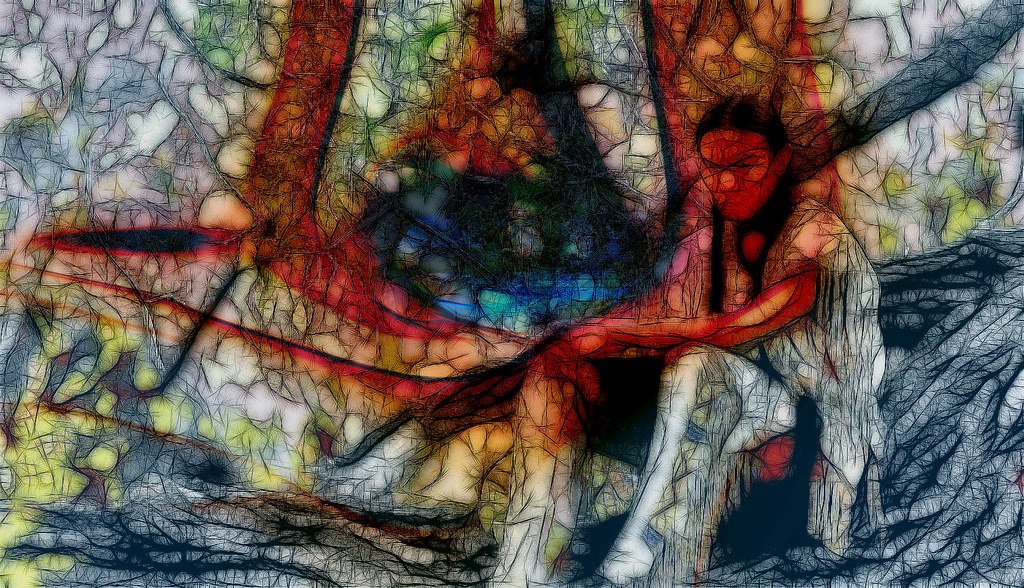
What we writers do can appear to have a magical quality. And after you've gone through a BFA or MFA program you learn all the craft techniques, like how to capture a plot, who to draw as a character, and, moreover, what voice to use to cast your spell.
This weekend I've thought a lot about my debut novel and varying elements within it, like structure, theme, character, and voice. I could talk for days on each of these, but often it's the latter that stumps most. Voice is elusive. While I thought about how the theme of my novel ties into the title, wanting to connect this for readers who might ask or for readers who might be interested in the larger thematics, but what I landed on was voice.
I thought about some of my favorite authors and how their writing styles are described. Words like conversational, gothic, magical, rural, and emotional kept popping up. Then I reflected on my own writing style or voice and came to each of the descriptors above. Often the writers we adore blend into the writer we become. And I landed most often on a single phrase: gritty conversational.

I'm a regionalist writer interested in capturing intertribal, multicultural, and transnational dynamics of my home communities--Tahlequah and Lawton, Oklahoma. As an engine for my writing, I'm most interested in realism. And the reason has to do with the romantical perspective people have about Natives. There seems to be this drive to reduce Natives to ahistorical tragic figures or overtly spiritual beings, like we're not contemporary people living and struggling inside a postmodern society.
Trying to convince people that we're human is a fulltime job in itself. Many of the depictions of Native peoples are of the above situations, and when both ahistorical tragedy and spirituality are mixed it becomes a much more harmful version of erasure. It's the modern version of the Pristine Myth, where people want to believe we Natives are no longer here, that Natives don't truly exist. We are either other worldly or in the past.
So I end up writing the grittiest version of who we are, because this captures Native people as being like everyone else. We work, care for our kids, do idiotic shit, love hard, fail even harder, and triumph in the last minute. But simply saying those words doesn't do enough. Readers need the emotional ride to truly understand, to truly grasp how we fit into the fabric of a global community.
This morning, I thought about my professor from back in the day, who wanted to be spellbound, and I couldn't help but think about how many readers want the Pristine Myth, they want Natives to be some sort of bizarre ahistorical tragedy comeback from the dead to save their souls. So weaving these stories with my "gritty conversational" style is a magic meant to wake readers from what they believe is a beautiful dream--but to us Natives it's the transformed but continued nightmare that began 530 years ago.
The Aftermath of the Final Draft: Novels
So I'm about to use this post as catharsis. I've done something tremendous. So momentous that it's a little unsettling. Or maybe I've made it unsettling by overthinking. But I can't help but wonder if this is a normal part of the process once a writer has submitted the final draft of her novel to an editor.
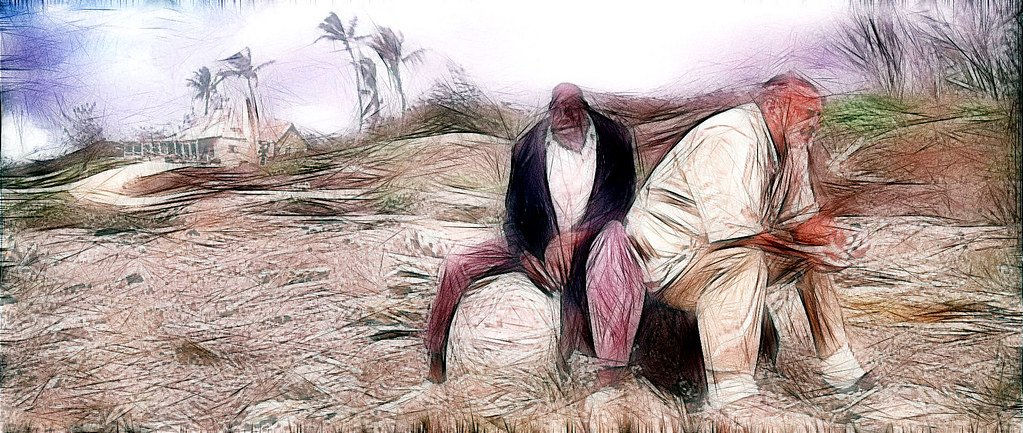
I received edits from my editor a couple months ago, and I immediately went into hiding. All my thoughts were focused on one thing: revise. The closer I came to the deadline, the more intense the focus became. Sure I asked for a couple extension. My book is my baby and I wanted to hold onto it for as long as I could. Then it came to the last extension. The book needed to move toward production, and I had squeezed out every possible moment.
“There is a ruthlessness to the creative act. It often involves a betrayal of the status quo.” ― Alan Watt
Then on Tuesday morning it happened. It was the first day of June. The year was 2021. Just after Labor Day weekend. Rain had been falling off and on for days. Tahlequah, Oklahoma had just left behind it's harshest storms and true summer sun was within grasp. That morning I woke and said, "I'm ready to let the book go. It's time." I had spent all my mental energy on this day.
Fast forward about two hours, I typed a short note in an email, clicked attach, and then the last step: send. It was done. The final manuscript shot into cyberspace and landed inside the inbox of my editor and agent. Congratulatory emails returned. My final draft was officially submitted.
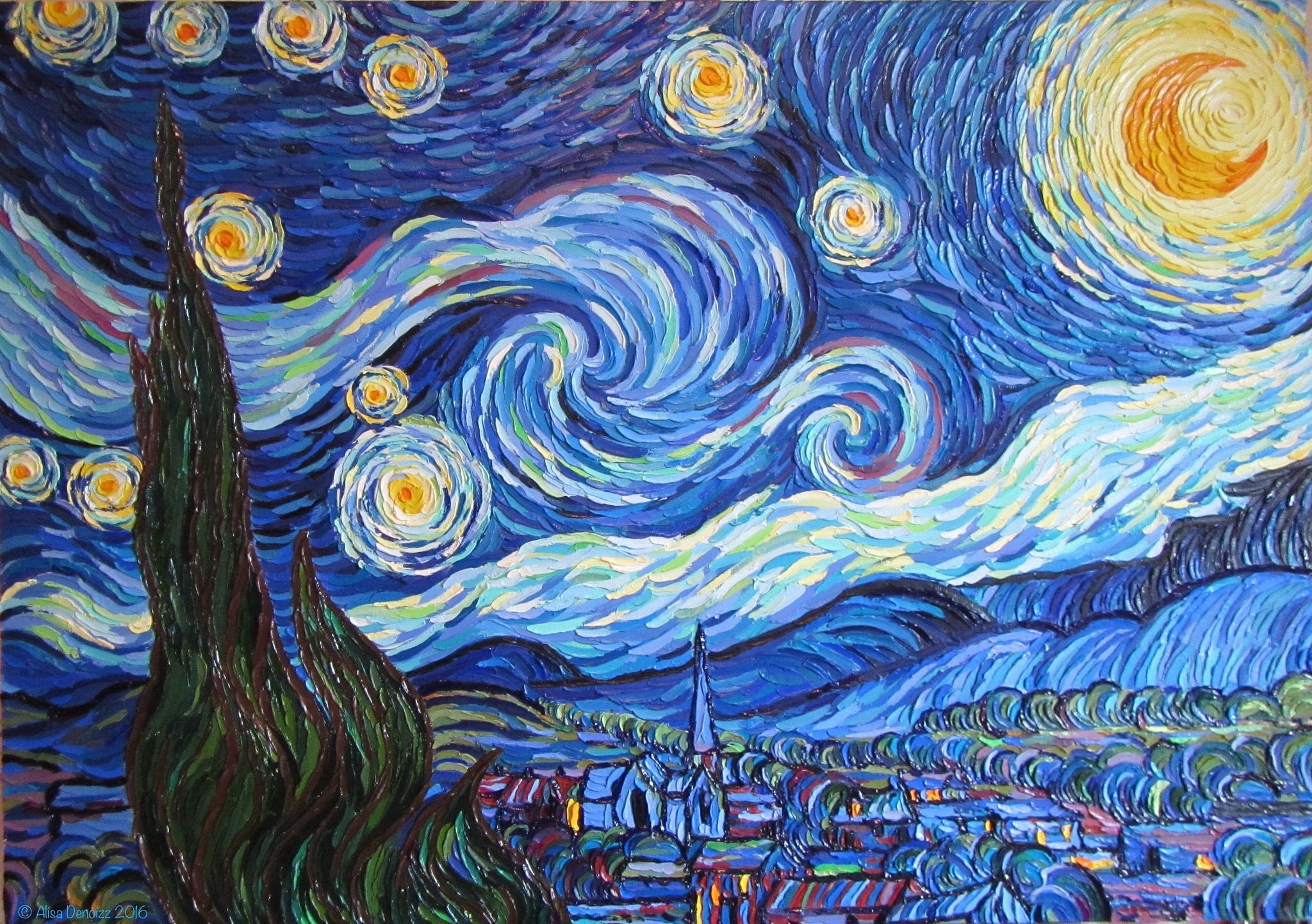
What happened next was a complete shock. I thought I'd be relieved and excited and would run around the office giving everyone high fives and people would take me out for a meal and some drinks and I'd fly in a jet to Peru and dine with elite writers from multiple hemispheres. But no. That did not happen.
What did happen? I was instantly depressed. I was suddenly sad. I was oddly withdrawn.
I thought, What's going on with me? This can't be normal.
“Writing is a struggle against silence.” ― Carlos Fuentes
I had spent so much time focused on the revisions and the moment I'd click send that I had not even thought about what was to come afterwards.
The only thing I can equate it to is the same feeling I had when my three adult children moved out. Like the time when my oldest son and I had breakfast one day. An innocent enough meal. But it was the first meal we had together where he'd leave in his car to his apartment and I'd leave in my car to go to my home. He wasn't coming home with me. He was no longer a child, and what we once had would never be the same again.
I suddenly realized I was mourning the loss of my book. I'd never delve into its pages the same way again. I'd reread the pages at some point in the future, but it'd never be the same. I no longer had anymore influence on it's words, it's chapters, it's characters. Now they had to do everything thing on their own.
This was the moment I realized why I kept asking for extensions. Certainly, there were tweaks to be made, but I couldn't deny there was this sense of trying to hold on, trying to have one more moment, one more memory before it all changed. Even if I didn't consciously realize it. I was holding on as long as I could.
It's scary when your child steps into the big, bright world. There are so many obstacles and pitfalls. But you can't be there for everything. To a certain extent, your baby needs to make mistakes--no matter how young you perceive him to be.
“Some part of me knew from the first that what I wanted was not reality but myth.” ― Stephen King
I've been working on this novel for a very long time. The oldest story in the novel was written in 2008. That's 14 years ago! By the time my book hits the market, it'll have been 15 years from the moment the oldest story was written. It took one and a half decades for this novel-in-stories to reach maturity. That in itself is a unique story to share.
But I have to move forward. I've popped open my other two novels and added a sentence in one, reread a few pages in the other, and stared at the line of chapters running down my flash drive. I want to be ready to move forward. But I might have to give myself a little more time. I thought this post was going to be my release point. But now I'm suddenly realizing that I'm still trying to hold on a moment longer.
Giving Back: Murrow Indian Children's Home Needing Assistance
I get mentally stuck sometimes, and frustrated, when I think of the disparity rates in the communities I serve. I'm Cherokee and Kiowa. I live in Tahlequah, Oklahoma and work for Indian Child Welfare. I've worked my entire career serving Native communities, working diligently to correct the disparity rates, and every time I see a Native person walking down the street strung out on meth, fidgeting and impulsively picking at their skin (the telltale signs of meth addiction), it breaks my heart. I get frustrated at the disparity rates among Native Americans and see first hand the negative impacts caused by historical trauma.

There is one way to change the disparity rates and that's by giving to a well vetted Native organization, like the Murrow Indian Children's Home in Oklahoma. It's more commonly called the Murrow Home for us locals. They provide care for Native children and are currently in need of specific items. Below you'll find a link to their official Facebook page:
We all want to help and often we don't know how. While I've dedicated my career to working with Native youth, many of us have occupations outside this field but equally want to contribute. My recommendation is to go through the process of vetting Native organizations. Don't wait for a Native person to do so. It can be frustrating for people of color to always have to do the leg work. If I can care enough about Native people that I'll do the work to track down organizations and talk to employees from specific organizations, then I expect anyone could do the same. Not to be harsh, but people of color are not slaves to someone else's enlightenment. Although, when I see a Native organization sending out a call, like the one on the Facebook page above, I'll go out of my way to help them meet their needs.
If you'd like to know more about the Murrow Indian Children's Home here is a link to their website: The Murrow Home. Also, here is a link to their amazon wish list page: Amazon Smile Murrow Home. Additionally, if you'd like to learn more about the history of The Murrow Home here is an article: Cherokee Phoenix Article on The Murrow Home.
I started my career working with a Native group home so my heart is close to helping children in those troubling circumstances. I know what it's like to mentor youth who need stability and safety in their lives, who need a strong role model. The Murrow Home is a rare group home that works specifically with Native youth, including Cherokee children from tribally specific Cherokee communities. If you're in a position to give back, please do so by reaching out to The Murrow Home directly or following one the links above.
(Image above was borrowed from flickr)
The Crocodile, the Goat, and the Unicorn: Unique Approaches to Character Development by Unifying Karpman's Drama Triangle, Evolutionary Astrology, and Stanislavski's Method Acting
There I am, like you, and so many writers, sitting at my computer and starting a new writing project. I'm drawing up characters because this story has been running through mind for years and it's finally ready to go onto a page. Since I already have a working idea of who my main character is and her antagonist, I now need to weigh her against Karpman's drama triangle. What is her good, bad, and ugly? This is how I've drawn multidimensional characters for over 10 years. But then two other creative forms changed my approach: Evolutionary astrology and Stanislavski's method acting. Those of you who have been following my blog for some time know that I'm a capricorn and if you follow my Twitter as well you'll see posts from time to time about being capricorn. I've followed astrology closely for about two years. I'm writing a character for another novel, or another novel that's rolling around in my mind right now, and astrology started as research for that character. Then I started to become more and more intrigued by it.So I'm a capricorn rising, capricorn sun, and libra moon in Western astrology, which is also called evolutionary astrology, and commonly practiced in North America and Europe. In Vedic astrology, which is the most commonly used form in Asia, I'm a capricorn rising, sagittarius sun, and virgo moon, with my moon nakshatra in uttra phalguni. If you follow astrology closely, you'll know what each of those mean, but if you don't it's how the stars were aligned the moment I was born and determines my personality, my ambitions, and my obstacles.So in both forms of astrology, I'm a capricorn, which isn't always the case because each measures birth timeframes differently. I'll not go into those details. But being a capricorn has always resonated with me.
Those of you who have been following my blog for some time know that I'm a capricorn and if you follow my Twitter as well you'll see posts from time to time about being capricorn. I've followed astrology closely for about two years. I'm writing a character for another novel, or another novel that's rolling around in my mind right now, and astrology started as research for that character. Then I started to become more and more intrigued by it.So I'm a capricorn rising, capricorn sun, and libra moon in Western astrology, which is also called evolutionary astrology, and commonly practiced in North America and Europe. In Vedic astrology, which is the most commonly used form in Asia, I'm a capricorn rising, sagittarius sun, and virgo moon, with my moon nakshatra in uttra phalguni. If you follow astrology closely, you'll know what each of those mean, but if you don't it's how the stars were aligned the moment I was born and determines my personality, my ambitions, and my obstacles.So in both forms of astrology, I'm a capricorn, which isn't always the case because each measures birth timeframes differently. I'll not go into those details. But being a capricorn has always resonated with me.
"In the end, you will find yourself with a long list of accomplishments and overcomes challenges that will mark your name, and these things you have done should bring you joy in the later years of your life because you decided that you would never quit." -- Bellatuscana
 For most of the last two years, I had been only aware of the capricorn sign symbolized by a climbing mountain goat. Then as I went deeper into researching astrology I discovered ancient astrology also symbolized the sign with a crocodile and a unicorn. So the cycle goes like this: the sign starts as a crocodile moves into a goat and then ends as a unicorn. So in it's lowest form, capricorns had strong crocodilian traits and were once viewed singularly as this reptile. Then at some point in human history, capricorn people evolved and started to act more like the mountain goat or a mythological sea goat. This is how the sign is currently symbolized. And so in the future, capricorn people, in their highest form of evolution, will start to take on traits of a mythological unicorn. The two horns of the goat fuse and turn into one, which symbolizes the spiritual use of the third eye.So how does all this pertain to Karpman's drama triangle and Stanislavski's method acting?Stephen Karpman developed a victim, rescuer, and persecutor psychotherapy model in 1961 for transactional analysis. In story writing terms, we writers modified this into a model for creating complex characters and applied the terms of victim, hero, and villain. So each character, aside from static characters, should have personality traits showing each of the three. This will reflect on the page as a real person to the reader, because, as Karpman pointed out in his model, people revolve between victim, rescuer, and persecutor in social situations. So if real folks do this, then so should your characters.
For most of the last two years, I had been only aware of the capricorn sign symbolized by a climbing mountain goat. Then as I went deeper into researching astrology I discovered ancient astrology also symbolized the sign with a crocodile and a unicorn. So the cycle goes like this: the sign starts as a crocodile moves into a goat and then ends as a unicorn. So in it's lowest form, capricorns had strong crocodilian traits and were once viewed singularly as this reptile. Then at some point in human history, capricorn people evolved and started to act more like the mountain goat or a mythological sea goat. This is how the sign is currently symbolized. And so in the future, capricorn people, in their highest form of evolution, will start to take on traits of a mythological unicorn. The two horns of the goat fuse and turn into one, which symbolizes the spiritual use of the third eye.So how does all this pertain to Karpman's drama triangle and Stanislavski's method acting?Stephen Karpman developed a victim, rescuer, and persecutor psychotherapy model in 1961 for transactional analysis. In story writing terms, we writers modified this into a model for creating complex characters and applied the terms of victim, hero, and villain. So each character, aside from static characters, should have personality traits showing each of the three. This will reflect on the page as a real person to the reader, because, as Karpman pointed out in his model, people revolve between victim, rescuer, and persecutor in social situations. So if real folks do this, then so should your characters.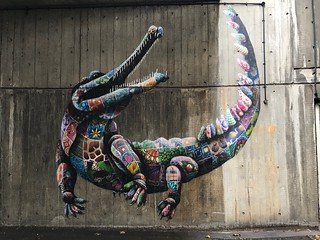 Now in my own writing, I tend to be pretty good about making my main characters into villains. I'm not sure why. Many writers will be protective of their main characters and make them so saintly they don't appear to be real people. I must be real crocodilian in my approach to character development, lol. I tend to want to throw my characters under the bus and have them appear to be unlikable. I am a big fan of the unlikable narrator, so that probably plays a part in it. Because I tend to lean heavily on the villain side of character development, I've used the drama triangle to make sure my characters also play hero and victim. This has saved me on a number of occasions by giving my character multiple dimensions.So there I am learning how capricorn in ancient astrology has these evolutionary patterns, and I'm a writer (the drama triangle is always floating around somewhere in the back of my mind). Suddenly, I think to myself, "What if I applied ancient astrology's approach with capricorn symbols to Karpman's model?" Then the villain becomes the crocodile, and the victim becomes the goat, and the hero becomes the unicorn. I've been gifted, aka cursed, with an overactive mind and imagination (great for storytelling but bad for peace of mind), so I suddenly start thinking in terms of "method acting."
Now in my own writing, I tend to be pretty good about making my main characters into villains. I'm not sure why. Many writers will be protective of their main characters and make them so saintly they don't appear to be real people. I must be real crocodilian in my approach to character development, lol. I tend to want to throw my characters under the bus and have them appear to be unlikable. I am a big fan of the unlikable narrator, so that probably plays a part in it. Because I tend to lean heavily on the villain side of character development, I've used the drama triangle to make sure my characters also play hero and victim. This has saved me on a number of occasions by giving my character multiple dimensions.So there I am learning how capricorn in ancient astrology has these evolutionary patterns, and I'm a writer (the drama triangle is always floating around somewhere in the back of my mind). Suddenly, I think to myself, "What if I applied ancient astrology's approach with capricorn symbols to Karpman's model?" Then the villain becomes the crocodile, and the victim becomes the goat, and the hero becomes the unicorn. I've been gifted, aka cursed, with an overactive mind and imagination (great for storytelling but bad for peace of mind), so I suddenly start thinking in terms of "method acting."
“Our demands are simple, normal, and therefore they are difficult to satisfy. All we ask is that an actor on the stage live in accordance with natural laws.” --
Konstantin Stanislavski begun the practice of method acting back in the early 1900s. The basic concept of the form is to "take on" traits of someone else or something else. This could mean an actor studying historical figures to such an intense degree that they "become" the person in behavior and thinking, like Kate Winslet in her portrayal of a former Nazi guard in The Reader. It also can mean an actor use the behavior of an animal to portray a specific depth, like Anthony Hopkins using traits of a lizard for his portrayal of serial killer Hannibal Lecter in The Silence of the Lambs.In the rapidity of an overactive imagination, I put the three together and started to make my drama triangle "character specific." So if my main character in my novel was like a spider in his villainy, then I asked myself: What animal would his victim and hero personas become? Or in astrological terms, what symbols would carry him through an evolutionary arch? If a crocodile can become a goat and then a unicorn, then a spider can become a bird and then a dragon.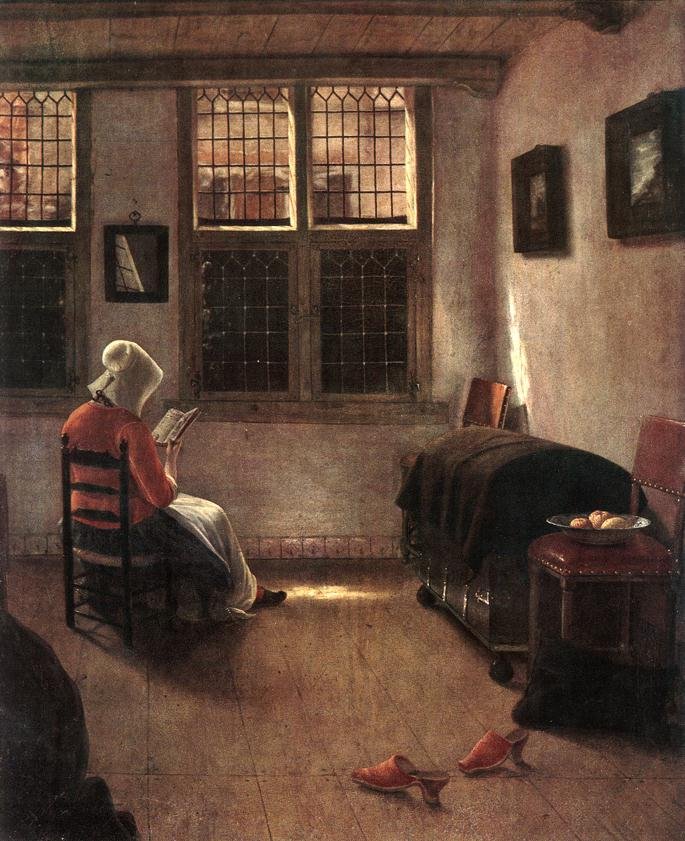 What's important to take away from this exercise is the freedom you obtain by marrying all three of these forms: drama triangle, evolutionary astrology, and method acting. By developing a "character specific" drama triangle, we as writers have a powerful tool to manifest complex characters out of thin air, like magicians mimicking the tools of a god. With the slight of hand, pencil and paper, screen and keyboard, we can hypnotize our audiences to feel as though they are participating in the lives of real people.
What's important to take away from this exercise is the freedom you obtain by marrying all three of these forms: drama triangle, evolutionary astrology, and method acting. By developing a "character specific" drama triangle, we as writers have a powerful tool to manifest complex characters out of thin air, like magicians mimicking the tools of a god. With the slight of hand, pencil and paper, screen and keyboard, we can hypnotize our audiences to feel as though they are participating in the lives of real people.
(Images were borrowed from pxfuel.com, maxpixel.com, flickr, and wikimedia commons)
On Writing an "Indian Child Welfare" Novel & Other Grand Adventures
I hiked into the Grand Canyon. I must've been in my late twenties, maybe early thirties. It started out as a walk to look over the rim. I had camped the night before in a tent at one of the sites and woke early (probably about 5am). I was there with a friend and she was still asleep. As the sun rose out of the east, I decided to follow the paved roads toward the rim of the Grand Canyon. It was nice to be out so early in the morning. No one was around. It felt like the entire world was mine alone. I strolled on the sidewalk lining the edge of the Grand Canyon mesmerized by the depth of the canyon and the streaming sunlight slowing filling it's center. It was beautiful, magical, and most of all peaceful.Then I happened upon an entrance. I didn't expect to find an invitation that day.
It was nice to be out so early in the morning. No one was around. It felt like the entire world was mine alone. I strolled on the sidewalk lining the edge of the Grand Canyon mesmerized by the depth of the canyon and the streaming sunlight slowing filling it's center. It was beautiful, magical, and most of all peaceful.Then I happened upon an entrance. I didn't expect to find an invitation that day.
“You can always edit a bad page. You can't edit a blank page.” ―
Similarly, I find stories as I stroll through my everyday. I'm always vigilant and, after being trained by the Institute of American Indian Arts and the University of Oklahoma, I see every moment as a beginning, middle, and end (a story).I've said this before. I write what I live, and create fiction by moving experiences around, compounding memories, and enhancing the "feeling" of a moment with embellishments. But embellishments can be made into entertainment when delivered as a book-sized package.I have three writing projects at the moment. Those of you who follow my blog likely know about two of those projects. The development of my novel, Uncle Called Him Spider, has been highlighted on this blog, and you can go back and find the collapse and expansion of those words in posts such as Gossip: Weapon of the Weak. It's in full first draft mode. I've revised a little but I've put it on hold. In fact, the reason I put it on hold lead me to another novel, or a novel-in-stories: Unsettled Between.
“A short story I have written long ago would barge into my house in the middle of the night, shake me awake and shout, 'Hey, this is no time for sleeping! You can't forget me, there's still more to write!' Impelled by that voice, I would find myself writing a novel.” ―
Unsettled Between began a decade ago. It's ten years in the making. I wrote one of it's first stories, Our Dance, with the help of instructors and classes at the Institute of American Indian Arts--this was around 2008. It was then published in 2010 with American Short Fiction. Then I developed another of it's stories, Time Like Masks, while completing my Master's Degree at the University of Oklahoma. It was picked up by South Dakota Review in 2011. Now, those stories are two of twelve in my novel, Unsettled Between. I'm proud to say it's rep'd by Allie Levick of Writers House.This brings me to the third project. This one is very recent. I'm calling it my "Indian Child Welfare" novel, as I develop the story-line to completion. As I had with Uncle Called Him Spider, I'll be brainstorming different components of the novel here on my blog. So be sure to click the "follow" button (not to sound too much like a YouTube video). I'm not going to give away much detail on this story. I tend to hold off on full disclosure until the novel has reached fruition. But as you read posts you'll be able to piece together what I'm struggling with, as far as what I need to capture, and where the novel is headed.
“You write about experiences partly to understand what they mean, partly not to lose them to time. To oblivion. But there's always the danger of the opposite happening. Losing the memory of the experience itself to the memory of writing about it.” ―
But I will say this: I've outlined 25 chapters and have developed a full synopsis of the novel at this point. I've worked out details that drive the action. But I've not written the first draft. That's my next step. So be sure to come back and check in. You'll find my frustrations and triumphs listed here. Often my brainstorming sessions show up at odd and unpredictable times. I'll also add: The world of child welfare is not what you think. I've worked for over ten years with at-risk populations and you might believe heroism has a certain purist quality to it, but I'll dispel that for you. I have a cast of characters in this "Indian Child Welfare" novel that'll both affirm and disrupt your belief in how people carry themselves in this field. When I say you'll be shocked, it's not about the obvious things. I don't dabble in the obvious. I advocate to "bare witness" to the unseen. No more secrets. So back to my trek into the Grand Canyon. I hiked halfway down that day. I passed people hiking back up (exhaustion on their faces) and people riding donkeys (scary). It was beautiful watching the morning light grow into full afternoon. At the halfway point, there was a watering station. I filled my water bottle, sat next to other hikers in the shade, and contemplated on how easy it was to climb down.I realized that around four hours had passed and I needed to get back to camp. I hadn't told my companion that I was leaving. She was still asleep. I didn't want to wake her. Besides, I thought I was going on a light walk to the rim and back. Surely, I'd have returned before she woke. Then I ended up halfway down into the Grand Canyon. Needless to say, I drank as much water as my stomach could hold, refilled my water bottle, and started the trek back up.Three steps into climb and I thought, "Oh shit, what did I get myself into?" My legs suddenly grew tight and each step became work. I had used a different set of muscles to cruise down the edges of the canyon. Now I had to use larger muscles to climb up. Long story short, six hours later I finally pulled myself out of the canyon and back to the rim. If not for a kind and generous young man, who walked a good portion of the hike alongside me, maybe it would've take me longer. He was ten years younger and already a good conversationalist. Somehow I made it back to the rim and, by the time I made it back to camp, the sun was starting to set in the west.
So back to my trek into the Grand Canyon. I hiked halfway down that day. I passed people hiking back up (exhaustion on their faces) and people riding donkeys (scary). It was beautiful watching the morning light grow into full afternoon. At the halfway point, there was a watering station. I filled my water bottle, sat next to other hikers in the shade, and contemplated on how easy it was to climb down.I realized that around four hours had passed and I needed to get back to camp. I hadn't told my companion that I was leaving. She was still asleep. I didn't want to wake her. Besides, I thought I was going on a light walk to the rim and back. Surely, I'd have returned before she woke. Then I ended up halfway down into the Grand Canyon. Needless to say, I drank as much water as my stomach could hold, refilled my water bottle, and started the trek back up.Three steps into climb and I thought, "Oh shit, what did I get myself into?" My legs suddenly grew tight and each step became work. I had used a different set of muscles to cruise down the edges of the canyon. Now I had to use larger muscles to climb up. Long story short, six hours later I finally pulled myself out of the canyon and back to the rim. If not for a kind and generous young man, who walked a good portion of the hike alongside me, maybe it would've take me longer. He was ten years younger and already a good conversationalist. Somehow I made it back to the rim and, by the time I made it back to camp, the sun was starting to set in the west. I apologized profusely to my companion, but she was kind about it all and made her own adventures that day. She, an artist herself, knew the flights of fancy we creative types tend to have. To this day, I can find myself on peculiar adventures at a moment's notice. And like novel writing, we stumble upon an entrance and dare ourselves to take the invitation. When we think we've completed the journey, we look up and find our challenge is only halfway complete. So here's to the next few steps.
I apologized profusely to my companion, but she was kind about it all and made her own adventures that day. She, an artist herself, knew the flights of fancy we creative types tend to have. To this day, I can find myself on peculiar adventures at a moment's notice. And like novel writing, we stumble upon an entrance and dare ourselves to take the invitation. When we think we've completed the journey, we look up and find our challenge is only halfway complete. So here's to the next few steps.
(Images were borrowed from flickr, pxhere, and wikipedia)
Novel DNA: How Writing Chapters can Change the World
What to do with a great idea? Let's sit down and map out a novel. Writing in the dark is a popular way of writing short stories. We get an idea. We pull out the laptop. We write until everything is on the page. As we write, we don't know where the story will lead and this suspense and feeling of surprise keeps us writing, it builds adrenaline, and keeps us guessing as we finish a story. But there may need to be a different approach when it comes to a 25 chapter novel.
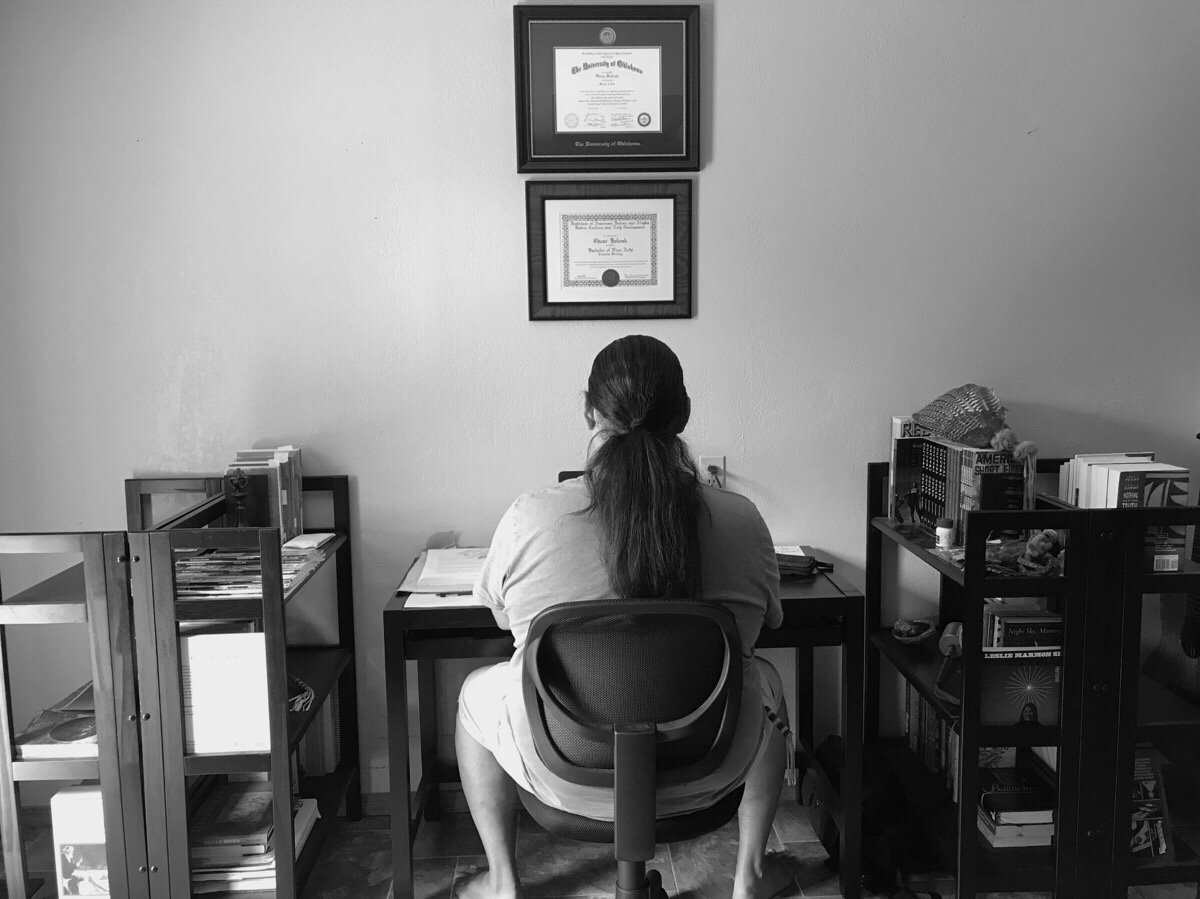
I'm not going to tell anyone how to write. We all have our nuanced approach. But what I'm going to do is share with you how I go about writing my novels. And where novel writing can be different and similar to short story writing. We've all gotten to the point where we've asked ourselves: How do I write a novel? Do I outline? If so, how do I outline multiple chapters to create an interesting story arch? Do I write in the dark for 80,000 words? If so, will my novel have deadly and boring lulls?
Do a little cross compare with my approach and fill in with your personal style. Make the process your own. That's one of the important components to any creative approach.
First thing I do: Create a OneNote file. The tabs work great to create space for each individual chapter. I always have a "development" tab, where I create multiple pages for subjects like characters, plot, subplots, story arch, etc. But I create a tab for each chapter so I can brainstorm elements within each chapter. What I need to consider for one chapter is not going to work for another. If there is a clear build up and tension to the novel, then every chapter will need a lot of space to create the nuances.
Example: If the main character is taking a child into custody in the first chapter, then I'll need space to brainstorm her approach, which will be determined by the other characters confronting her and how she will overcome that confrontation. This is radically different than the second chapter, where the main character might be confronting a whole different situation, like children adjusting to a new foster home.

Also, I like to have all the tools in OneNote. I can draw out the build up as you can see in the image above. I can also write text boxes for each idea I need to address for development. I can also move those boxes around.
So once I have the space established to develop my novel, I then go into writing a "synopsis" of sorts. It's a line by line breakdown of the novel. It's not a full synopsis by any sorts but it gives me a quick snapshot of the progression of the main character's obstacles. Also it gives me an opportunity to consider subplots. In a novel, it's important to establish subplots that mirror or give us a break from the main story line.
Example: If the main character is a young man who is trying to overthrow his corrupt boss, then the reader will need to take a break from the ugliness transposed between the two. We can see him with his family and his family gives him stress relief as he battles with this boss, but it will simultaneously show the family putting pressure on him to be successful at work. The subplot shows a different side to this young man, and it also adds to the tension while giving the reader an alternate storyline to follow.

So I had to "shear" the screen because the above image is a screenshot from the current novel I'm working on. I don't want to give away any details in the novel before it reaches fruition. But as you can see in the above image, it shows a "list" of each chapter from chapter one to chapter 25. I'd also like for you to notice the different colors on each line. There are chapter breakdowns in black, red, blue, and purple. The black represents the main plot line, the red is a tightly related subplot (a subplot closely aligned with the main plot), while the blue and purple are subplots that show a seperate but nuanced mirror to the main plot (gives the reader an emotional "break" from the plot while also increasing tension).
You're probably asking why I go to such lengths to map out my novels. For me the pleasure of writing isn't only in the initial creation of a piece. I like the practice of "writing in the dark" when it comes to short stories. But when we're trying to hold someone's attention for a long period of time, there needs to be numerous components to keep the reader entertained. This is the reason I write. For other people to have as much pleasure reading the novel as I had creating it. When it's two fold, we as writers get more in return because then we have happy fans who are eager to talk about and share our writing. In order to reach that goal, there is a lot of layers to create.
I enjoy the macro development as much as the micro. As I create the big picture, outlining chapter by chapter how the main character will survive all the obstacles I throw in her way, the concept building can be euphoric. It's a physical reaction. After I've written the first draft and I'm finally ready for the details (the micro), I'm getting adrenaline from witnessing the spirit of the novel come alive in the words. Suddenly, my idea that corruption can be beaten becomes emotionally tangible when the main character throws a fist full of contracts into an evil boss's face. It all comes together.
There is nothing more exciting than seeing the DNA of a novel build word by word into a complex living system. And it takes hard mental labor to structure a story so perfectly that someone can read your work and suddenly choose to transform their worldview to include people you know and experiences you've lived. To make that connection, it's worth all the time, thought, and energy spent.
Support a Native owned Etsy shop, Allies United, where I offer unique merch for allies of social justice movements, like MMIW, Native Lives Matter and Black Lives Matter. Take a look inside my Etsy shop here: etsy.com/shop/AlliesUnited.
Underground Matriarchy: #WIP Debut Novel "Unsettled Between"
We've heard the reified stories of men brutalizing men. A rehearsal of patriarchy. In fact, hyper masculine bullshit permeates our lives. We see in the media, if not in our daily lives, the ramifications of patriarchy unchecked. So what's the answer? Men are being called out now more than ever and violence continues. Wars haven't stopped. We hear about a mass shooting in the U.S. almost everyday. In my debut novel, Unsettled Between, Ever Geimausaddle faces his own brutality with the help of an underground matriarchy.
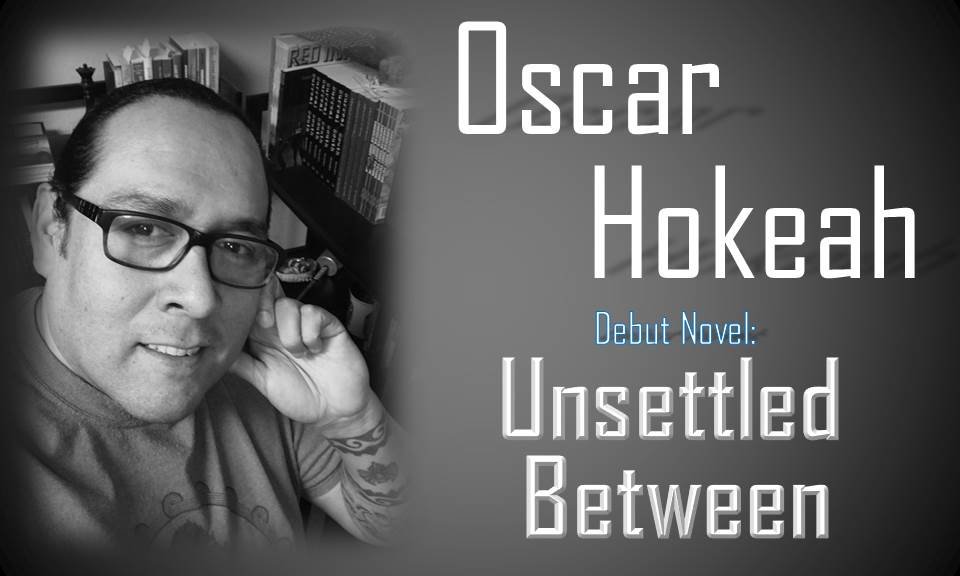
There are subcultures who maintain the values of matriarchy throughout the U.S. I'll speak here about tribal matriarchy because my experiences are based in Cherokee and Kiowa communities and culture. I'm also fortunate to belong to a family of matriarchs, where women in our family make the major decisions and delegate responsibilities.
"Our mothers echoed words they had echoed before—this time we listened. 'Being Kiowa will forever be about how we dance together.' Seemed like, being sisters, those words were a song that made them family, but more important: it made all Kiowas come together." -- Unsettled Between
Ever Geimausaddle finds himself being witness to brutality and subjected to abuse, where he develops deeply aggressive behavior. We also see this occur often in poor and disparagged communities. Ever's circumstances are no different. He encounters numerous examples of violence and domineering masculine attitudes, whether it's violence handed down from his father or colonial violence handed down from a history of conflict.
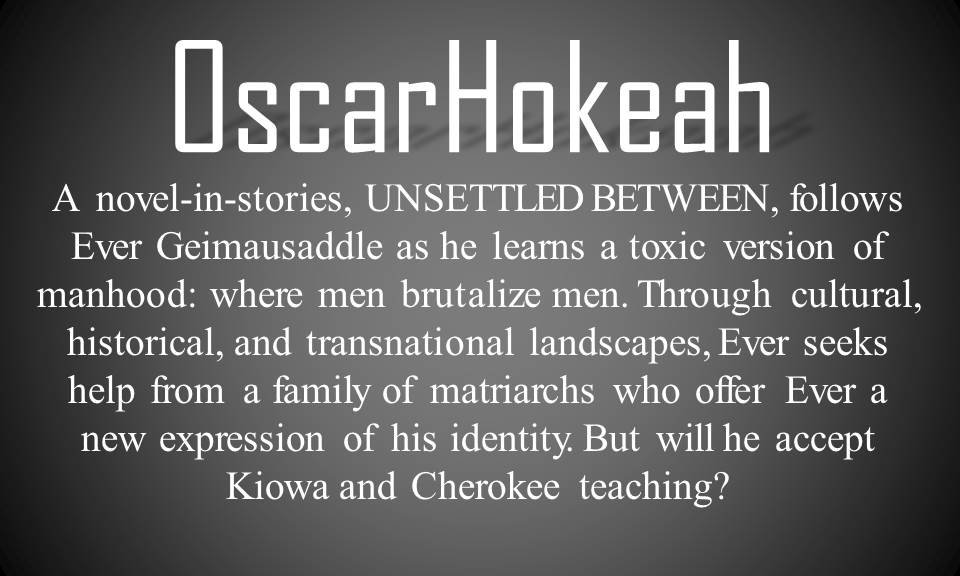
How does Ever handle these challenges? Better yet, how do the matriarchs in his family direct him? Moreover, are there matriarchal males present in his family to be role models?
"I ran into the living room, calling for my mother—ready to tattle, tell, and cry—but there was an old man sitting on the couch. He held this heavy coffee colored cane at his side. His skin had the texture of a turtle’s hide. His jaw seemed to hang lower than normal. My mother was at the store, he told me, introduced himself as an uncle, he claimed, a Bird Clan member, someone distant but a relative." -- Unsettled Between
At the end of the day, issues revolving around this current version of patriarchy needs to also be addressed by men. We, men, need to understand and then purge the violence we're trained to rehearse. Those of us who are more progressive, or who are willing to change, understand the ultimate self-destructiveness hyper masculine constructs bring.
"We were known as messengers. Cherokees depended on the Bird Clan to care for children who delivered original instructions between the spirit and material worlds. Bird Clan mothers protected birds in practical and ceremonial ways." -- Unsettled Between
Ever Geimausaddle was born into violence, rehearses violence, but he doesn't have to perpetuate violence to the next generation. In fact, if he can learn the lessons from the matriarchs in his family, he could potentially become the answer his tribal communities need: a male standing against patriarchy.
Support a Native owned Etsy shop, Allies United, where I offer unique merch for allies of social justice movements, like MMIW, Native Lives Matter and Black Lives Matter. Take a look inside my Etsy shop here: etsy.com/shop/AlliesUnited.
Story Like Bonsai are Reborn through Deadlines & Transformations
Like clipping and pruning back branches on a bonsai tree. Then we wire and train those branches to spread in the appearance of organic design reflective of the natural environment, taking careful consideration and steady hands. We have to make the right decisions. I've been revising Unsettled Between over the last two months and it's been a transformative process not only for the novel but for me as well. Writers get the pleasure of constant reflection, taking what's occurred in our own life and looking for material. I've always used my personal experiences to write fiction. There is no better way to draw unique and resonate stories. When I have a personal investment in the story, I tend to write with more intensity. This transfers well to the reader. They get more emotion and have a stronger connection to the characters. When I can relate to a character, whether this is in likeable or unlikable ways, I tend to be more interested to know how the story will turn out.I'm reminded of Alice Munro's short story, Child's Play. The main character is terribly unlikable. She's bitterly judgmental and cold. Then ultimately she commits the worst act imaginable. I've read this story at least two dozen times, and I shake my head every time I come to the ending. Munro expertly develops a character who I simultaneously hate and for some reason: I can't turn away. I have to read to the last word. And it pays off.Then I wonder if this character's personality is reflective of someone in Munro's life. Where did she get the inspiration to draw such a character?I turned in revisions for my novel, Unsettled Between, today. Today was the deadline. And I love deadlines. And I love feedback. Like cultivating bonsai, feedback and deadlines give me the shape and inspiration to complete a naturally flowing design for a novel.
Writers get the pleasure of constant reflection, taking what's occurred in our own life and looking for material. I've always used my personal experiences to write fiction. There is no better way to draw unique and resonate stories. When I have a personal investment in the story, I tend to write with more intensity. This transfers well to the reader. They get more emotion and have a stronger connection to the characters. When I can relate to a character, whether this is in likeable or unlikable ways, I tend to be more interested to know how the story will turn out.I'm reminded of Alice Munro's short story, Child's Play. The main character is terribly unlikable. She's bitterly judgmental and cold. Then ultimately she commits the worst act imaginable. I've read this story at least two dozen times, and I shake my head every time I come to the ending. Munro expertly develops a character who I simultaneously hate and for some reason: I can't turn away. I have to read to the last word. And it pays off.Then I wonder if this character's personality is reflective of someone in Munro's life. Where did she get the inspiration to draw such a character?I turned in revisions for my novel, Unsettled Between, today. Today was the deadline. And I love deadlines. And I love feedback. Like cultivating bonsai, feedback and deadlines give me the shape and inspiration to complete a naturally flowing design for a novel. And like anything worth doing, I learned something new about myself during this round of revisions. Or maybe it was a remembering. That I can't force anything. The first month, July, I had such a hard time. I needed to replot my opening chapter so in essence it was going to become a different story, like making a tree into a bonsai--transformation was needed. It all came out and I was very pleased with the outcome, but the story seemed to want to do things on it's own timeline. The story told me what it wanted. I didn't tell it. This was something I knew--to allow the story to shape itself--but there was a part of me that wanted to force things to happen. And I was beat back everytime I tried.Once I let go, the story wrote itself. It was organic. The branches grew toward the sun and it became a much more pleasing process. Certainly, I pruned and trimmed and clipped a few leaves here and there. What bonsai enthusiast wouldn't? What writer wouldn't? But I worked with the structure rather than forcing it. The two main characters, protagonist and antagonist, battled it out and wrote the story for me. I simply sat back and watched the story manifest.
And like anything worth doing, I learned something new about myself during this round of revisions. Or maybe it was a remembering. That I can't force anything. The first month, July, I had such a hard time. I needed to replot my opening chapter so in essence it was going to become a different story, like making a tree into a bonsai--transformation was needed. It all came out and I was very pleased with the outcome, but the story seemed to want to do things on it's own timeline. The story told me what it wanted. I didn't tell it. This was something I knew--to allow the story to shape itself--but there was a part of me that wanted to force things to happen. And I was beat back everytime I tried.Once I let go, the story wrote itself. It was organic. The branches grew toward the sun and it became a much more pleasing process. Certainly, I pruned and trimmed and clipped a few leaves here and there. What bonsai enthusiast wouldn't? What writer wouldn't? But I worked with the structure rather than forcing it. The two main characters, protagonist and antagonist, battled it out and wrote the story for me. I simply sat back and watched the story manifest. Now I've given my novel, Unsettled Between, to my agent, Allie Levick. I'm excited. Nervous, yes, but ultimately ready for the good things coming. Whether it's another round of revisions or steps toward acquisition, I'm grateful for the novel's transformation and it's becoming something unique and powerful. I reflect, now, on a year ago and remember how the novel was, thinking of the small growth and the subtle shifts. It has not only grown, but with expert hands my agent and I have shaped it into a very interesting story--so much so, this story is new in it's form and concept, allowing me to dream of the moment when I can announce, "This is a story that has never been told."
Now I've given my novel, Unsettled Between, to my agent, Allie Levick. I'm excited. Nervous, yes, but ultimately ready for the good things coming. Whether it's another round of revisions or steps toward acquisition, I'm grateful for the novel's transformation and it's becoming something unique and powerful. I reflect, now, on a year ago and remember how the novel was, thinking of the small growth and the subtle shifts. It has not only grown, but with expert hands my agent and I have shaped it into a very interesting story--so much so, this story is new in it's form and concept, allowing me to dream of the moment when I can announce, "This is a story that has never been told."
Support a Native owned Etsy shop, Allies United, where I offer unique merch for allies of social justice movements, like MMIW, Native Lives Matter and Black Lives Matter. Take a look inside my Etsy shop here: etsy.com/shop/AlliesUnited.
(Images borrowed from Pixabay.com, commons.wikimedia.org, and needpix.com)
Fourth Wall Subtleties as Tool for Liberation in Native American Context
Suppose you're at a coffee shop and you're telling your best friend about your workday. You're saying so-and-so is building a case to take to human resources and will file a lawsuit soon. So-and-so has evidence of coercion and retaliation. Maybe it's based on gender. Maybe it's based on race. So-and-so will also file with the Equal Employment Opportunity Commission as a federal employee complaint due to implicit biases at work. Then you notice someone at the next table staring and listening with interest at all the juicy details.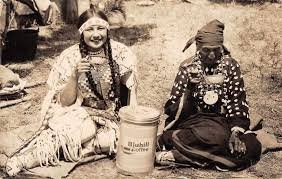 At this point you could choose to ignore the person and finish the story with your friend. But instead you acknowledge your listener by saying, "You should've been there," and then continue.Breaking the fourth wall is acknowledging the reader or disrupting the illusion of a fictional space. In post modernist literary terms it's called metafiction or authorial intrusion and meant to disrupt a structured order, especially one bent on maintaining hierarchies. Metafiction can happen in a variety of ways, such as an author inserting themselves into the story line or using a second person narrator or using a peripheral narrator who slips into the second person use of "you." The latter gives the audience the sense of listening over someone's shoulder, like the coffee shop scenario above.So why use this method? It's not common in literature. In fact, breaking the fourth wall is a stage or screen term and it happens in a movie when a character either looks at the camera or addresses the camera, meaning the audience.Many authors insert themselves into the story line and typically this is more of self congratulating behavior rather than having any real substance. In Bronte's Jane Eyre, she has Jane address the audience as a reaction to her loneliness. It enhances the story and character, as opposed to drawing attention to the author.As many of you know, I'm working through the final revisions of my novel. In this phase, I tend to contemplate anything and everything. I like to reason all the variables. Why I would approach a story a certain way. Or in this case: a novel.
At this point you could choose to ignore the person and finish the story with your friend. But instead you acknowledge your listener by saying, "You should've been there," and then continue.Breaking the fourth wall is acknowledging the reader or disrupting the illusion of a fictional space. In post modernist literary terms it's called metafiction or authorial intrusion and meant to disrupt a structured order, especially one bent on maintaining hierarchies. Metafiction can happen in a variety of ways, such as an author inserting themselves into the story line or using a second person narrator or using a peripheral narrator who slips into the second person use of "you." The latter gives the audience the sense of listening over someone's shoulder, like the coffee shop scenario above.So why use this method? It's not common in literature. In fact, breaking the fourth wall is a stage or screen term and it happens in a movie when a character either looks at the camera or addresses the camera, meaning the audience.Many authors insert themselves into the story line and typically this is more of self congratulating behavior rather than having any real substance. In Bronte's Jane Eyre, she has Jane address the audience as a reaction to her loneliness. It enhances the story and character, as opposed to drawing attention to the author.As many of you know, I'm working through the final revisions of my novel. In this phase, I tend to contemplate anything and everything. I like to reason all the variables. Why I would approach a story a certain way. Or in this case: a novel. As a Native American writer, it's especially important to have readers understand the Native world is not a fantasy world. It's real and filled with real consequences. I have to say this aloud because unfortunately many readers view our world as "romantic." Tragic, yes. But romantic. Meaning, Native lives are so far removed that many readers feel they can get lost among our pages in the same fashion as following around Frodo Baggins in the Lord of the Rings.
As a Native American writer, it's especially important to have readers understand the Native world is not a fantasy world. It's real and filled with real consequences. I have to say this aloud because unfortunately many readers view our world as "romantic." Tragic, yes. But romantic. Meaning, Native lives are so far removed that many readers feel they can get lost among our pages in the same fashion as following around Frodo Baggins in the Lord of the Rings. Ultimately, I insert myself into one of my story/chapters in order pull the reader out of the pages for a moment so as to consider these circumstances are not fantasy, but these types of things really happen in the Native world. Moreover, I harness the use of the "you" as a second person narrator addressing the main character so as to give the reader an opportunity to reflect on the character as potentially like themselves, where they have a short period of time where they get to "walk in his shoes." More or less, to humanize the character and allow the reader time to step back from their fantastical perspective.When you come from a world where colonization has transformed itself into distorting Native ideologies, you're going to want to help people understand it's not okay to romanticize us because it leads to exploitation. In that case, breaking the fourth wall or authorial intrusion becomes a tool for liberation.
Ultimately, I insert myself into one of my story/chapters in order pull the reader out of the pages for a moment so as to consider these circumstances are not fantasy, but these types of things really happen in the Native world. Moreover, I harness the use of the "you" as a second person narrator addressing the main character so as to give the reader an opportunity to reflect on the character as potentially like themselves, where they have a short period of time where they get to "walk in his shoes." More or less, to humanize the character and allow the reader time to step back from their fantastical perspective.When you come from a world where colonization has transformed itself into distorting Native ideologies, you're going to want to help people understand it's not okay to romanticize us because it leads to exploitation. In that case, breaking the fourth wall or authorial intrusion becomes a tool for liberation.
(Images were borrowed from Wikimedia, Wikipedia, and ferris.edu)
Underling Mentality in "The Smurfs:" Why Azrael Allows Himself to be Abused by Gargamel
No one believes themselves to be like Azrael. If we had to choose between the cat and Gargamel, we'd all choose Gargamel--if push came to shove. We'd rather be neither, or think of ourselves as neither. But we're one or the other in someone's eyes. This article is an examination of how the "underling" can allow himself to be abused. And maybe we can resolve: Why we allow people in power to control us.
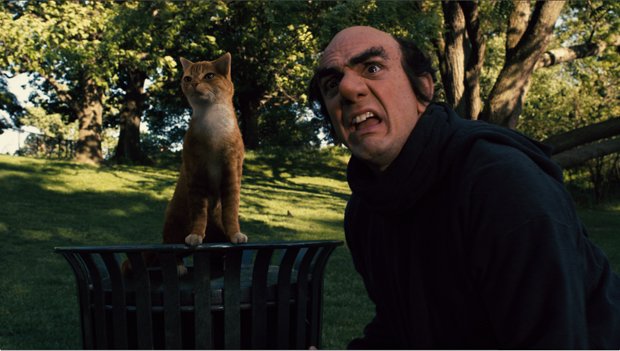
Look around your office. Assess a hierarchy. Who is running the show? Who is the underling? To discover the underling, identify the person who gets in hot water the most. Underlings always receive more abuse. They will throw themselves into a pit of wild boars just to appease their master.
There is always a discerning quality to the person "running the show." They never get in trouble. They send their underlings out to do the dirty work. So the underlings are the ones who get attacked, receive blame, and punished. Meanwhile, their master sits over there as comfy as can be, living life without a worry in the world.
"Often in codependent relationships, one partner – sometimes an addict, narcissist, or abuser – wields power over the other." -- Darlene Lancer, JD, MFT
I worked in a group home setting for six years and the staff were trained to identify who was the leader, so as to identify who was truly causing the others to act out. It was always the one who never got in trouble. He made underhanded comments, which propelled the others to become violent. As soon as we identified who caused the issue and pointed out to the residents how they were manipulated, all of a sudden the violence went down.
We're all asking: How can someone have such little self-respect that they allow themselves to be abused and manipulated?
I'm not going into the details of that deep psychosis. Neither of us have that kind of time. But we can use a movie like The Smurfs to quickly deduce a type of reward system. In The Smurfs movie, Azrael wants to eat a Smurf. Likewise, Gargamel wants to capture the Smurfs to drain them of their power and use the power for himself. This very simple structural technique quickly points to a human condition to band together with someone for a common goal.
"The power paradox requires that we be ever vigilant against the corruptive influences of power and its ability to distort the way we see ourselves and treat others." -- Dacher Keltner in The Power Paradox
Azrael will laugh at Gargamel when The Smurfs make Gargamel look like a fool, and in some of the cartoon episodes Azrael turns against Gargamel. But ultimately, Azrael allows Gargamel to treat him terribly and abuse him, whether physical or verbally.
Now take a look around your office again. Who acts like an Azrael? Now, who is their Gargamel? How does the Azrael subject themselves to abuse? Do they get insulted? Does the Azrael do things that will potentially get themselves fired? How does the Gargamel provoke others to act? What is the Azrael's reward? Why would they allow themselves to be used?
~~~
If you enjoyed this article, support a Native author and order Oscar Hokeah’s debut novel, CALLING FOR A BLANKET DANCE: Bookshop, Barnes & Noble, Amazon, Target, Walmart, Books-A-Million, IndieBound
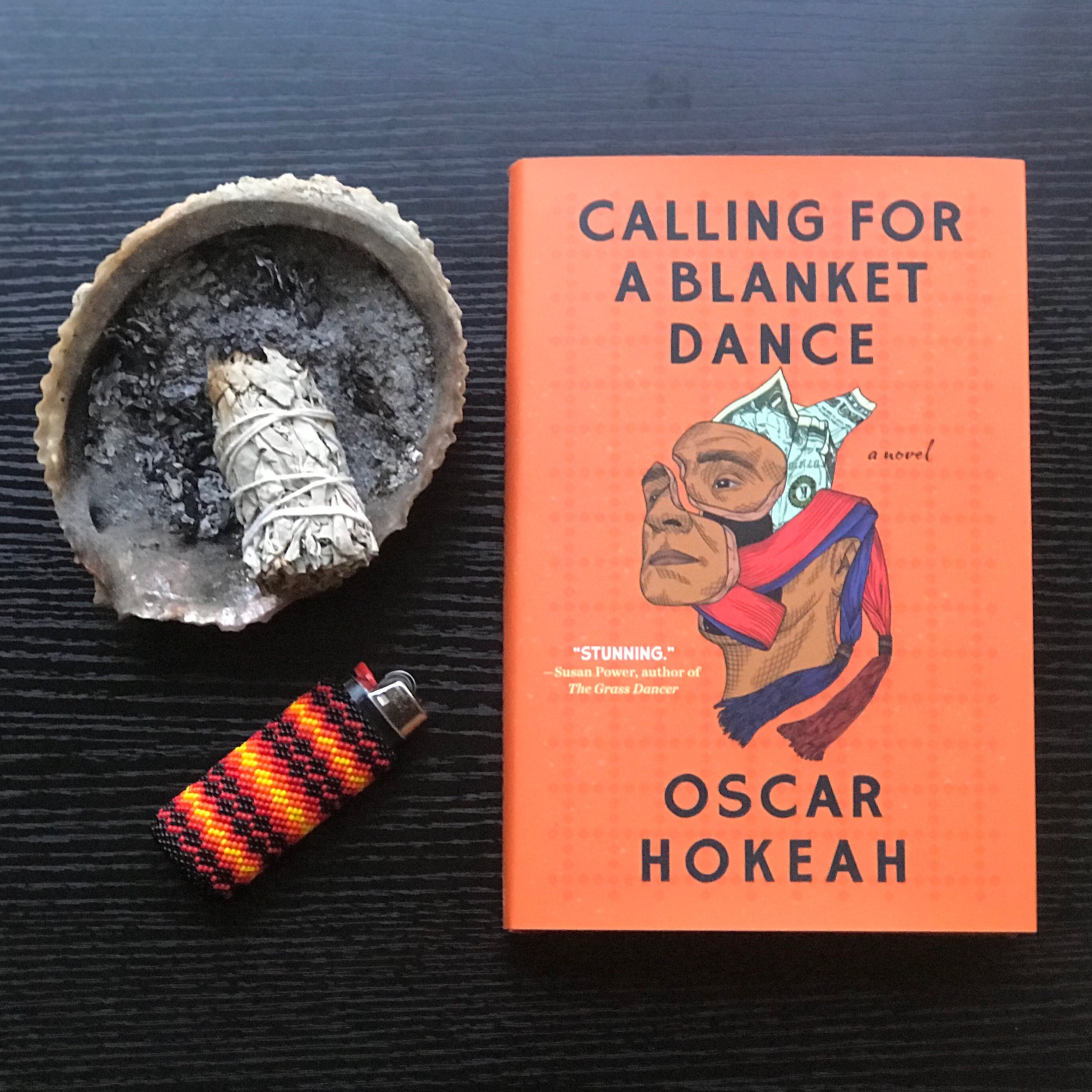
From the Edge of a Cliff to Under a Bus: Living Under the Dark Skinned Microscope
Have you ever felt like you were being watched? It's a creepy feeling. And then you look up to find someone staring. Your instincts picked up on the energy and you knew before looking that someone was watching you. When I encounter implicit bias, it has the same effect. I know when I'm being targeted with excess negative attention. I wonder why someone is so concerned about me in my life, when I have zero interest in theirs. The person comes off as creepy, and likely harbors underlying racist and sexist ideologies about dark skinned males. There are numerous articles on implicit bias so I'm not going into detail about how it works. The baseline: society, community, family low key trains us to look at individuals with biases. Dark skinned males are always assumed to be criminals so we are watched much closer. So much so, people keep watching until the slightest mistake occurs and then they attempt to blow it out of proportion. Fortunately, in my circumstances, the overreaction has been so blatantly noticeable it quickly becomes dismissible and the person looks like a psychopath.I'd like to write about the above mentioned pattern. This pattern isn't something typically covered by the "implicit bias" articles. It has to do with manifest destiny. Not the manifest destiny that came out of Europe centuries ago and massacred millions of Native Americans. But it is akin. If you believe it, it will come.What I've found in my personal life and work life are repeated, almost predictable, patterns where individuals will attempt to throw me under the bus. Meaning, they will find the smallest opportunity to try to get me in trouble with superiors. People believe dark skinned males to be criminal, but when we are more concerned with reading books rather than committing crimes then they subconsciously seek out ways to make us criminals.What happens? I have to stay within the lines more so than people around me. I can see people wasting entire days of time with school work or personal phone calls. But my entire day is tracked. I'll stand from my cubicle and someone will quickly ask, "Are you leaving?" I'll say, "No, I'm just going to the bathroom." If incidents like this happened in isolation, then I'd dismiss them. But I have consistently been asked arbitrary questions about what I'm doing. Then it's contrasted when no one else around me receives the same line of questioning. This has occurred throughout my entire working and academic career. Even my bathroom visits receive comments. I have to time my daily 15 minute breaks at work to be at the exact same time everyday, while other workers can spend hours gossiping. Those are just some examples of the many I face everyday when I walk out of my door.
There are numerous articles on implicit bias so I'm not going into detail about how it works. The baseline: society, community, family low key trains us to look at individuals with biases. Dark skinned males are always assumed to be criminals so we are watched much closer. So much so, people keep watching until the slightest mistake occurs and then they attempt to blow it out of proportion. Fortunately, in my circumstances, the overreaction has been so blatantly noticeable it quickly becomes dismissible and the person looks like a psychopath.I'd like to write about the above mentioned pattern. This pattern isn't something typically covered by the "implicit bias" articles. It has to do with manifest destiny. Not the manifest destiny that came out of Europe centuries ago and massacred millions of Native Americans. But it is akin. If you believe it, it will come.What I've found in my personal life and work life are repeated, almost predictable, patterns where individuals will attempt to throw me under the bus. Meaning, they will find the smallest opportunity to try to get me in trouble with superiors. People believe dark skinned males to be criminal, but when we are more concerned with reading books rather than committing crimes then they subconsciously seek out ways to make us criminals.What happens? I have to stay within the lines more so than people around me. I can see people wasting entire days of time with school work or personal phone calls. But my entire day is tracked. I'll stand from my cubicle and someone will quickly ask, "Are you leaving?" I'll say, "No, I'm just going to the bathroom." If incidents like this happened in isolation, then I'd dismiss them. But I have consistently been asked arbitrary questions about what I'm doing. Then it's contrasted when no one else around me receives the same line of questioning. This has occurred throughout my entire working and academic career. Even my bathroom visits receive comments. I have to time my daily 15 minute breaks at work to be at the exact same time everyday, while other workers can spend hours gossiping. Those are just some examples of the many I face everyday when I walk out of my door.
It has to do with manifest destiny. Not the manifest destiny that came out of Europe centuries ago and massacred millions of Native Americans. But it is akin. If you believe it, it will come.
Ultimately, it has given me a stronger work ethic. When everyone is trying to turn you into something you're not, you become more of who you really are. I'm a work horse. Dependable. And focused. I show up for my kids. I'm proud to be a nurturing father. At the end of the day, my children and my family are the reasons I stay the course. Implicit bias isn't going fade away because we are aware. Most institutions where I've worked and attended for my education have trained staff and students on implicit bias. For a few months afterwards, I get less monitoring and harassment. But after time passes, it always starts back up again. Like taking care of my family isn't enough, I also get the pleasure of walking the edges of a cliff.
Chaotic Resonance of the Echo Chamber
We're tweeting and sharing and posting. We touch on a politically sensitive subject. And we don't hesitate to engage in a friendly dialogue amongst community members. This is how folks learn. The back and forth sway. As we all know, a simple text exchange can quickly turn a meal of delicacies into a food fight.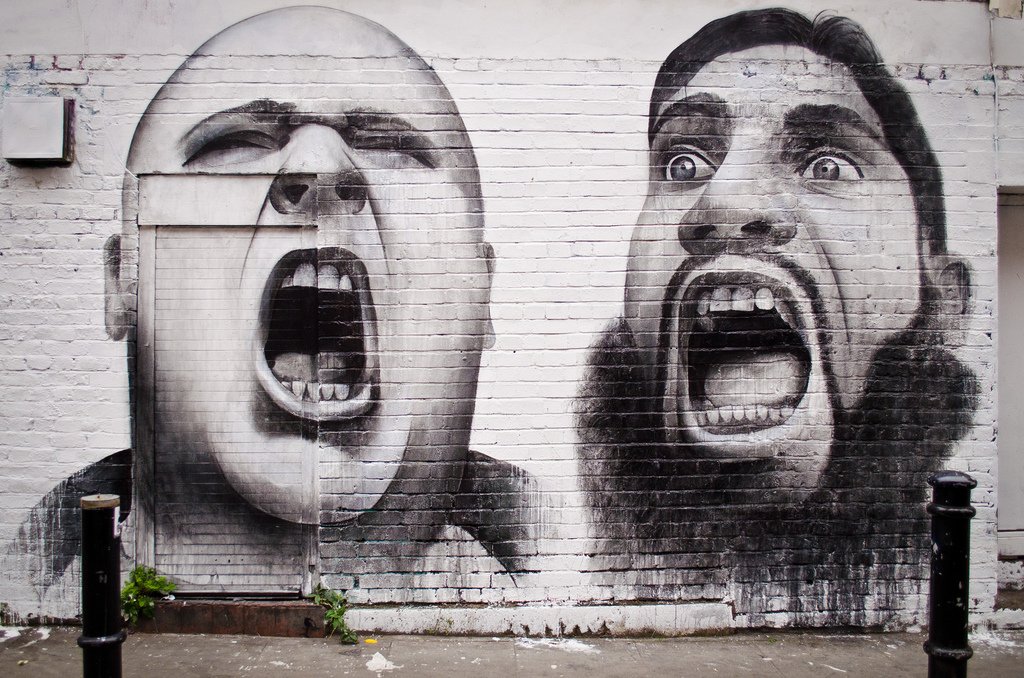 How do you handle these situations? People can get defensive and hurl insults and redirect the conversation to be something personal. Maybe the person was having a bad day and was ready to conflict with anyone, and you happened to be at the wrong place at the wrong time. Or maybe you unknowingly overstepped a boundary. Either way, an issue was created. Then we must determine: Is this salvageable? Or do we part ways?Social media allows us to develop online allies who echo our sentiment, but our allies might not share the same ideology so there can be conflict. Being an ally doesn't mean we're supposed to agree on every angle of an issue. We might agree on the issue, but the approach can be different. Allyship also doesn't mean people have license to verbally abuse someone. I don't get to attack you because you misunderstand a nuance within Native culture. And vise versa. You don't get to attack me for advocating for my tribal communities. It's a frail rope we walk, but one worth walking. And will pave a path for new methods in forming society. First, we must productively engage.Since social media disassociates physical proximity from verbalized ideology, how do you respond to issues of contention? Do you immediately block someone? Do you withhold your thoughts to save an argument? Do you ask someone to take a break from the exchange? Or do you repeatedly engage until either you or the other person grows tired enough to unfollow and block? How do you handle the chaotic resonance of the echo chamber?
How do you handle these situations? People can get defensive and hurl insults and redirect the conversation to be something personal. Maybe the person was having a bad day and was ready to conflict with anyone, and you happened to be at the wrong place at the wrong time. Or maybe you unknowingly overstepped a boundary. Either way, an issue was created. Then we must determine: Is this salvageable? Or do we part ways?Social media allows us to develop online allies who echo our sentiment, but our allies might not share the same ideology so there can be conflict. Being an ally doesn't mean we're supposed to agree on every angle of an issue. We might agree on the issue, but the approach can be different. Allyship also doesn't mean people have license to verbally abuse someone. I don't get to attack you because you misunderstand a nuance within Native culture. And vise versa. You don't get to attack me for advocating for my tribal communities. It's a frail rope we walk, but one worth walking. And will pave a path for new methods in forming society. First, we must productively engage.Since social media disassociates physical proximity from verbalized ideology, how do you respond to issues of contention? Do you immediately block someone? Do you withhold your thoughts to save an argument? Do you ask someone to take a break from the exchange? Or do you repeatedly engage until either you or the other person grows tired enough to unfollow and block? How do you handle the chaotic resonance of the echo chamber?
Support a Native owned Etsy shop, Allies United, where I offer unique merch for allies of social justice movements, like MMIW, Native Lives Matter and Black Lives Matter. Take a look inside my Etsy shop here: etsy.com/shop/AlliesUnited.
(Image above was borrowed from Flickr)
Colloquial Traits in Tribal Regionalism
Often I sit here in front of this computer and think about how to capture the voice of a narrator. Voice is the darkness around the thief, his soft footsteps, and his choice of victim. There is nothing innocent about what we writers do. We're persuasive colonizers seeking to intrude on your sensibilities. We're convincing--softly so. When I read passages from Faulkner's work and observe the way he captured southern diction, I can't help but be humbled. The small pauses and grand judgements alike--all are done with a slight of hand I wish to master.
When I read passages from Faulkner's work and observe the way he captured southern diction, I can't help but be humbled. The small pauses and grand judgements alike--all are done with a slight of hand I wish to master.
“In a strange room you must empty yourself for sleep. And before you are emptied for sleep, what are you. And when you are emptied for sleep, what are you. And when you are emptied for sleep you are not. And when you are filled with sleep, you never were. I don't know what I am. I don't know if I am or not.” ― William Faulkner, As I Lay Dying
I've taken the task to implement something similar with my two tribal communities. I've sought to capture the way Kiowa and Cherokee people speak as the chosen "voice" for my narration. Why? It's not just because I was raised in these two communities, but that is a major reason. When you grow up between two tribal cultures, especially two which are historically set in two different landscapes (southern plains versus mountain/hills), you can't help but recognize the beautiful differences.My writing has always attempted to disrupt the homogenous stereotype of Native people belonging to the same culture (and often a culture perceived to be plains). It's important to know there are unique differences between each tribal culture and we are brought together by a common and shared history of colonialism. The continued struggle against this colonial force has further fused our identities in a universal Pan-Indian construct. But the differences in our languages, dances, songs, customs, social etiquette hasn't vanished.In the case of my writing, we can also include colloquialism.Kiowa and Cherokee people share colonial boundaries by having been transplanted into what was formerly known as Indian Territory (the largest prisoner of war camp in recorded history), which is now Oklahoma. Kiowa people live on the southern plains while Cherokee people live in Ozarks. But both tribes are in Oklahoma. Not only are my tribes divided by geographical topography but also language, culture, and tribal history. Before the reservation era, Kiowa people were nomadic and situated in a warrior culture (a part of a tribal plains coalition which held off the U.S. government from westward expansion for over 100 years), and Cherokee people were agrarian mountain people (who spear-headed major legal battles with the U.S. government generations before plains Natives seen their first U.S. soldier).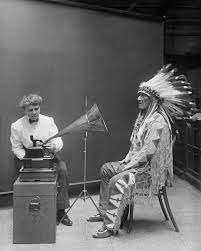 As a writer, my attempt is to show this distinction by way of vernacular. In the way you read Faulkner's representation of Southern culture in the above passage, I take the Oklahoman way in which Cherokee people speak that's indicative of small towns in the Ozarks of northeastern Oklahoma and northwestern Arkansas. To contrast, I take an Indigenized English through Kiowa language to capture how tribes on the southern plains speak.Below I give an example from two different short stories. Time Like Masks (published in South Dakota Review) captures the Okie twang that is characteristic of how Cherokee people speak in my community of Tahlequah. Our Dance (published in American Short Fiction) captures an Indigenized English which is not only indicative of how Kiowa people speak, but Comanche and Apache on the southern plains.Cherokee/Tahlequah:
As a writer, my attempt is to show this distinction by way of vernacular. In the way you read Faulkner's representation of Southern culture in the above passage, I take the Oklahoman way in which Cherokee people speak that's indicative of small towns in the Ozarks of northeastern Oklahoma and northwestern Arkansas. To contrast, I take an Indigenized English through Kiowa language to capture how tribes on the southern plains speak.Below I give an example from two different short stories. Time Like Masks (published in South Dakota Review) captures the Okie twang that is characteristic of how Cherokee people speak in my community of Tahlequah. Our Dance (published in American Short Fiction) captures an Indigenized English which is not only indicative of how Kiowa people speak, but Comanche and Apache on the southern plains.Cherokee/Tahlequah:
"Come to find out, he was the grandson to my aunt Josie, who was the sister to my mother, Leanna. According to Cherokee clan customs, Carl was a nephew, a nephew through a first cousin I hardly knew. Guess that was how relations grew as old got older—more years, more kin. My aunt Josie went and married a Kiowa and spent most of her days living in southern Oklahoma; I never visited so I hardly seen my cousins, much less their kids. Carl, on the other hand, made himself known to me in a peculiar way. Unlike others, I listened to him, and you might say, at least how I figured, he baffled everyone." --Oscar Hokeah in Time Like Masks
Kiowa/Lawton:
"Gaa, we were just little guys, around a year old, when Kiowas started getting that ahongiah back in ’76, no, maybe in ’77. It was the coalition of Kiowas, Comanches, and Apaches that leased a tract of land to Fort Sill military base for one hundred years. Good thing, too, because us Kiowas divided our share of the money between all tribal members, fifteen hundred a piece. Those of us under the age of eighteen had our money held in trust, growing interest until our day. We were the last in our families to walk through the front doors of those cookie-cutter homes to hear our mothers say, 'Your per cap check is on the table.'" --Oscar Hokeah in Our Dance
The trick isn't just to capture the nuances in the speech pattern, but to also transfer it to literature. When we tell a story face-to-face we're filled with excessive pauses and added words to fill time and space for us to think as we speak. When transforming a vernacular to the page, you must take out enough and leave in enough to capture the intended identity. This is not easy. It took me years to find the right balance.But all this goes toward showcasing the beautiful differences between Kiowa and Cherokee culture. There are a number of other things I do--some obvious and some subtle--to further capture the difference, but this post is about voice so I wanted to speak directly about vernacular in my tribal communities and in my writing. As we move to an appreciation of diversity in America, we can further appreciate the complexity of tribal cultures.The two above examples are a part of my novel-in-stories, Unsettled Between. I'm deep in a final revision right now and tightening up character and voice. The novel is narrated by twelve different family members and focuses on the transformation of one character, Carl Geimausaddle. Like so many of us, Carl wants the freedom to be his own person, to shape his own identity. He attempts to do so by leaving his family and rejecting his Kiowa and Cherokee communities. But will life struggles allow him his freedom? Unsettled Between examines how identity is at the mercy of community and the inseparable bond we have with the people who love us the most.Unsettled Between is Rep'd by Allie Levick of Writers House Literary Agency.
Support a Native owned Etsy shop, Allies United, where I offer unique merch for allies of social justice movements, like MMIW, Native Lives Matter and Black Lives Matter. Take a look inside my Etsy shop here: etsy.com/shop/AlliesUnited.




